Annual Report 2019–2020

50
No.
2 Introduction 6 Academic Activities 14 Print Publications 18 British Art Studies 22 Fellowships and Grants 32 Yale in London 34 Learning Programme 36 Write on Art 38 Archives and Library 44 British Art Network 48 Special Projects 56 Staff Activities 60 Appendix Contents
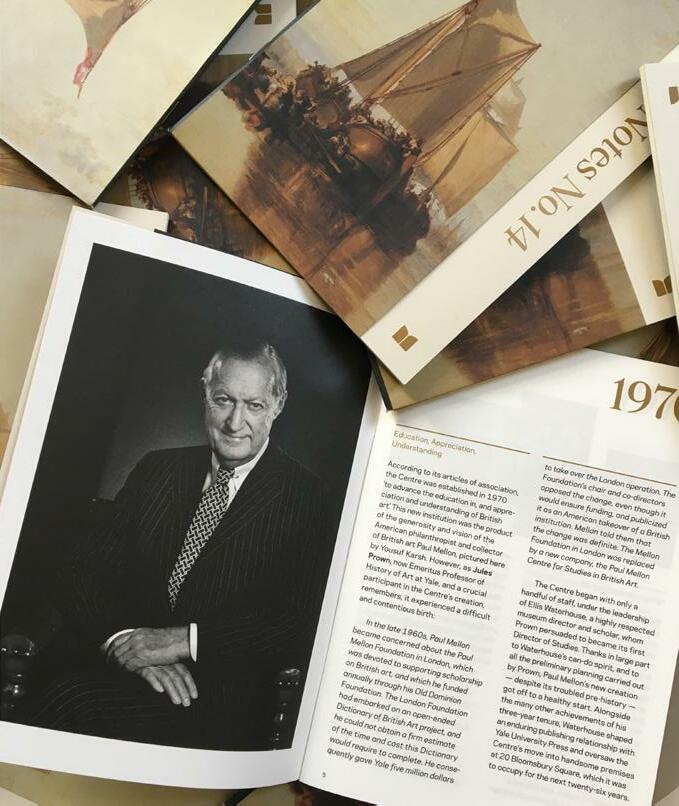
I have great pleasure in submitting the fiftieth Annual Report of the Paul Mellon Centre for Studies in British Art.
As for every other institution in the arts and educational sectors, the story of the Centre’s past year has been one of rupture and change.
In the period running from the summer of 2019 to the spring of 2020, the Centre was a place of bustling activity and mounting excitement. We inaugurated a new Graduate Summer School, hosted a busy programme of academic events across the autumn and winter, published a raft of monographs, launched three issues of our online journal British Art Studies, awarded scores of grants and fellowships, and looked forward to the implementation of the many special initiatives that we had planned for our fiftieth anniversary year in 2020. To mark the occasion, I wrote a short history of the Centre, which was published in January as a special issue of PMC Notes. This gave me the chance both to look back over the institution’s many contributions to the field of British art studies, and to look forward to an exciting year ahead.
That year, of course, turned out to be an entirely different one to that which we had expected. From spring 2020 onwards, the Centre’s workings were transformed by the impact of the global coronavirus pandemic. In the space of a few days in late March, the entirety of the Centre’s staff began working from home, directing their efforts towards a new kind of scholarly and educational programme in which almost everything we did would be discussed, prepared, conducted, disseminated and published online. I am proud to report that all my colleagues at the Centre responded magnificently to the challenge. We delivered a programme of seminars, workshops, lectures and films that was as busy and vibrant as any in our history. We carried on teaching Yale in London students across three time zones. We published all the books that were slated to appear in our spring and summer list, together with the sixteenth issue of British Art Studies. We pressed ahead with numerous archival and library cataloguing projects, and with our major in-house research project, Art and the Country House. Perhaps most importantly of all, we moved quickly to create a new programme of Research Continuity Grants and Fellowships,
PMC Notes, Issue 14, January 2020, a special fiftieth anniversary edition Introduction
3 Paul Mellon Centre Annual Report 2019–2020
designed to support institutions and individuals whose scholarly endeavours were being threatened by the pandemic. These awards, totalling £200,000, were distributed to successful recipients in June, and proved crucial in sustaining research across the sector.

In the summer of 2020, the sense of emergency generated by Covid-19 was amplified and extended by the worldwide protests that followed the killing of George Floyd in police custody in late May. These protests prompted the Centre, like all progressive cultural establishments in the UK and US, to confront the issues of racism and discrimination head-on. In a public statement issued on 5 June, we reiterated the fact that:
The Centre is fundamentally committed to promoting anti-racist values and weaving them into the fabric of the institution. Responding to the calls to action from colleagues in the arts and higher education, we are reviewing our policies governing research, grants and fellowships, publications, collections and staffing at the Centre, with the aim of furthering the fight against racism and discrimination. We will also redouble our efforts to speak with and learn from wider communities, and reach out to new audiences.
The last few weeks of the period covered by this report were dominated by these discussions, and saw us beginning the process of developing new initiatives designed to promote and support race equity, both at the Centre itself and in the wider field of British art studies.
Mark Hallett Director of Studies
4 Introduction
Meeting of the Advisory Council of the Paul Mellon Centre, 2019.

to
Martin Postle, Nicholas Tromans, Harriet Fisher, Julian Luxford, John Goodall, David Mellor, Lynda Nead, David Dibosa, Jo Applin, Mark Hallett, Martin Myrone, Christopher Breward, Tarnya Cooper, Christine Riding, Courtney Martin, Sarah Victoria Turner.
5 Paul Mellon Centre Annual Report 2019–2020
Left
right:
Photo courtesy of Martine La Roche
Academic Activities
The Centre hosted a rich and diverse academic activities programme as it entered its fiftieth anniversary year. The 2019–20 programme featured scholars, curators, artists and students. It also adapted to the extraordinary conditions brought about by the global pandemic. A vital range of virtual event formats, including the participation of new and ever-more international audiences, now complements the Centre’s vibrant programme of in-person events.
The fiftieth anniversary has provided an opportunity to renew thinking about the critical and creative resources that British art, culture and heritage bring to urgent contemporary questions, and to attend to fundamental new developments in the field. The series of fiftieth anniversary lectures hosted at the Centre took stock of major developments in the study of British art, including a stimulating range of perspectives on the subject’s evolution over the past fifty years. Distinguished speakers from different areas of British art history described their own experiences of the field and discussed its wider development during recent decades.
Collaborations with a number of partner institutions were realised during the year. The conference William Blake and the Idea of the Artist was devised in partnership with Tate Britain to mark its exhibition of the artist’s work. With Kettle’s Yard, the Centre ran Radical Materialities: Linder and Companion Histories, an international conference that accompanied a major exhibition of works by Linder Sterling. The Centre also collaborated with the curators of British Art Show 9 to workshop and devise curatorial and public programme modes.
Questions of global ecology and social justice have engaged the attention of all those invested in the field of British art histories during the year and are shaping the academic activities programme. A first series of the Centre’s new podcast British Art Talks was released, featuring new research by a broad range of historians which in each case resonated with challenges faced under lockdown conditions. The podcast invites speakers to present and discuss their research via the form of an audio programme that is accessible to specialist and general audiences, both local and international.
Linder, Pythia (detail), 2017. Courtesy the artist and Stuart Shave/Modern Art. Devonshire Collection, Chatsworth
6
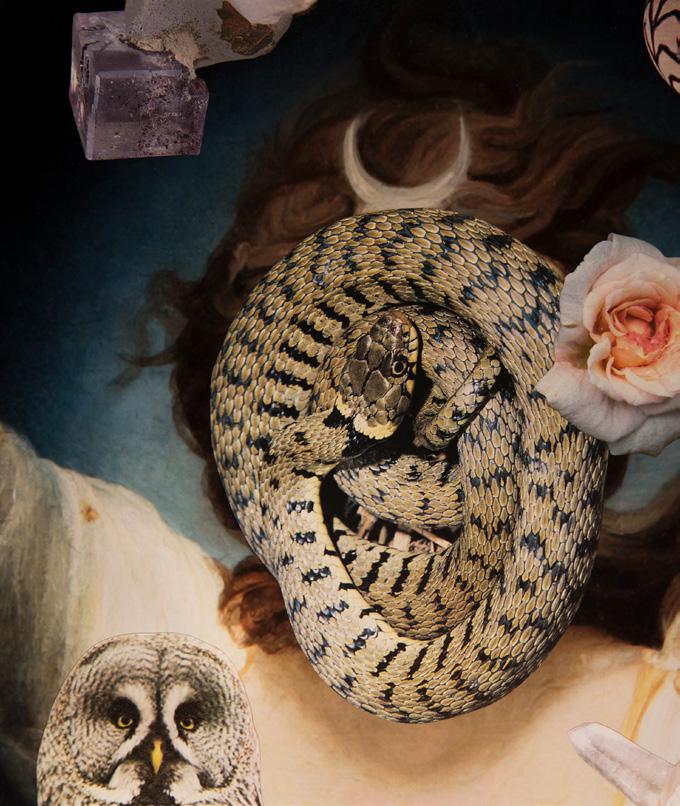
Academic Activities
July 2019–June 2020
3–6 July 2019
Bedford Square Festival
Art, architecture and cultural festival developed by the Paul Mellon Centre with partner organisations Yale University Press, the Architectural Association, Sotheby’s Institute and the New College of the Humanities.
30 September–1 October 2019
Homework: Artists’ Studio Homes and their Afterlives in Britain and the United States
An international conference organised and sponsored by the Paul Mellon Centre for Studies in British Art, the Henry Moore Foundation, Historic Artists’ Homes and Studios (HAHS), with underwriting support from the Terra Foundation for American Art.
Convened by Hannah Higham (Henry Moore Foundation), Valerie Balint (HAHS) and Sarah Victoria Turner (PMC)
Day 1:
Sarah Victoria Turner (PMC), Valerie Balint (HAHS) and Hannah Higham (Henry Moore Foundation), ‘Welcome and Introduction’
Elizabeth Prettejohn (University of York), ‘Keynote Paper’ with Q&A, introduced by Valerie Balint
Mary Cronin (Brandywine River Museum of Art), ‘Keeping Visitors Engaged (on a budget) at the N. C. Wyeth and Andrew Wyeth Studios’
Helena Bonett (Barbara Hepworth Museum and Sculpture Garden), ‘Diversifying Knowledge and Value within the Studio–museum: A Methodological Case Study of the Barbara Hepworth Museum and Sculpture Garden’
Laura Esparza (City of Austin’s Parks and Recreation Department), ‘The Life, Work, and Legacy of Elisabet Ney: An Artist for OUR Times’
Chaired by Martin Postle
Julia Griffin (Central Saint Martins (UAL) & William Morris Gallery), ‘Between History, Memorialisation and Cultural Forgetting: Recovering the “Lost” History of Kelmscott Manor as D. G. Rossetti’s Unconventional Studio House (1871–1874/1880s–2019)’
Kate Sunderlin (Buford House), ‘The Studio of Edward V. Valentine and its Place in Art History’
Andrew Stephenson (Independent), ‘The Legacies of Francis Bacon’s 7 Reece Mews Studio-Home’
Chaired by Mark Hallett
Alison Oram (Leeds Beckett University), ‘Queer Artists: Their Places and Place in English National Heritage’
Victoria Munro (Alice Austen House), ‘Queering Memory and the Alice Austen House’
Chaired by Lisa Stone
Louise Campbell (University of Warwick), ‘Keynote Paper’ with Q&A, introduced by Sarah Victoria Turner
Donna Hassler (Chesterwood), ‘Closing Remarks’
Day 2:
Darren Clarke (Charleston Trust), ‘As if They’ve Just Left the Room: Maintaining Intimacy and Authenticity at Charleston Farmhouse’
Elizabeth Jacks (Thomas Cole National Historic Site), ‘Creating an Authentic Interaction with Thomas Cole: A Case Study’
Ruxandra Bageac (John F. Peto Studio Museum), ‘Educating with Aging Objects at the John F. Peto Studio Museum’
Chaired by Sarah Victoria Turner
Sean Ulmer (Cedar Rapids Museum of Art), ‘The Grant Wood Studio: Birthplace of American Gothic’
Tasmin Wimhurst (David Parr House), ‘Case Study of the David Parr House: “Life and Art in a Workers Home”’
Amy Kurtz Lansing (Florence Griswold Museum), ‘Art, Environment, and Authenticity on the Robert F. Schumann Artists’ Trail at the Florence Griswold Museum’
Chaired by Valerie Balint
Hannah Higham (Henry Moore Foundation), ‘Introduction to Henry Moore House and Grounds’
8
Cicely Robinson and Molly Skinner (Artist Studio Museum Network Team), ‘Presentation’
Autumn Research Seminar Series 2019
2 October Alexandra Kokoli, ‘Towards a Virtual Feminist Museum of Greenham Common’
16 October David Kastan, ‘Does Colour Have a History?’
27 November Mark Hallett, ‘The Newspaper Man: Michael Andrews and the Art of Painted Collage’
30 October 2019
Book Launch: Artists’ Moving Image in Britain Since 1989
Speakers: Erika Balsom (Senior Lecturer in Film Studies, King’s College London), Lucy Reynolds (Senior Lecturer in the School of Arts, University of Westminster) and Sarah Perks (Professor of Visual Art at Manchester School of Art, Manchester Metropolitan University)
Chaired by Chris McCormack
5 October 2019
Paul Mellon Centre x Art UK x Art+Feminism Wikipedia Edit-a-thon Workshop held at the Paul Mellon Centre.
Sarah Victoria Turner (PMC) and Lydia Figes (Art UK), ‘Welcome and Introduction’
Jacqueline Mabey (co-founder of Art+Feminism), ‘Introduction and How to Edit a Wikipedia Entry’
Autumn Research Lunch Series 2019
11 October Edwin Coomasaru, ‘Brexit and the Occult: Gendered Ghosts of Empire’
25 October Jennifer Dudley, ‘The Hayward Annual 1978: A Case Study in Combating Male “Artocracy”’
8 November Michael Clegg, ‘Merlyn Evans’ Vertical Suite in Black (1957) and the Trajectory of “Primitivism” in British Art from Vorticism to the Independent Group’
22 November Julie Lageyre, ‘Narrating British Art: Robert de la Sizeranne’s Use of Insularity’
6 December Samantha Niederman, ‘“A Liberation of Spirit”: Transatlantic Seascapes by Winifred Nicholson and John Marin’
Fellows Lunches 2019
15 October Shirlynn Sham, ‘“The Eighth Wonder of the World”: Science and Sublimity in Marc and Isambard Brunel’s Thames Tunnel Project’
29 October Hannah Kahng, ‘Cut to Black: Filmic Disidentifications in the Work of Lis Rhodes’
12 November Avigail Moss, ‘Against All Risks: Insuring Art in the Nineteenth Century’
16 October 2019
Drawing Room Display: Modern Art and Publishing between 1935 and 1955
Video Tour via Facebook Live with Sarah Victoria Turner (PMC)
5 November 2019
Hogarth’s Moral Geography
Workshop held at the Paul Mellon Centre, co-organised by the Paul Mellon Centre and Sir John Soane’s Museum.
Session 1:
Mark Hallett (PMC), ‘Welcome and Introduction’
Meredith Gamer (Columbia University), ‘Meat and Bones: Topographies of Violence in Hogarth’s Four Stages of Cruelty’
Session 2: Chaired by Martin Postle (PMC)
William K. S. Aslet (University of Cambridge), ‘Hogarth and Modern Architecture’
Gillian Williamson (Birkbeck, University of London), ‘Lodging the Garret Poet: Before and After Hogarth’
Stacey Sloboda (University of Massachusetts), ‘The Four Times of Day in St. Martin’s Lane’
Session 3: Chaired by Bruce Boucher (Sir John Soane’s Museum)
Cristina S. Martinez (University of Ottawa), ‘Towards a Topography of Law in Hogarth’s Modern Moral Subjects’
Kate Grandjouan (Courtauld Institute of Art/New College of the Humanities), ‘Moral Geography in Marriage à la Mode: Hogarth’s Dirty French’
David Bindman (University College London, Curator of Hogarth: Place and Progress), Frédéric Ogée (Université Paris Diderot) and Christine Riding (National Gallery), ‘Final Discussion’
14 November 2019
British Art Studies, Issue 13: London, Asia, Exhibitions, Histories: Launch Event
Celebration for the launch of the British Art Studies special issue, ‘London, Asia, Exhibitions, Histories’.
Hammad Nasar and Sarah Victoria Turner, ‘Overview’
Ming Tiampo (Carleton University, Ottawa and London, Asia Research Award holder), Annie Jael Kwan (Asia Art Activism) and Victoria Walsh (Royal College of Art), ‘Panel Discussion’
9 Paul Mellon Centre Annual Report 2019–2020
28–29 November 2019
William Blake and the Idea of the Artist
A conference co-organised by the Paul Mellon Centre for Studies in British Art and Tate Britain.

Day 1 at Tate Britain:
Laura Grace Ford, ‘Presentation’
Laura Grace Ford and Sarah Victoria Turner, ‘In Conversation’
‘Audience Q&A’, Chaired by Sarah Victoria Turner (PMC)
Day 2 at the Paul Mellon Centre:
Session 1: Chaired by Mark Hallett (PMC)
Silvia Riccardi (University of Freiburg), ‘“What the hand, dare sieze the fire?” William Blake’s MediaTranscending Journey’
Todd Dearing (Flinders University), ‘Etching Out Blake’s Mythological Artist in Contemporary Times’
Session 2: Chaired by Martin Postle (PMC)
Marte Stinis (University of York), ‘Blake, Swinburne, and Art for Art’s Sake’
Colin Trodd (University of Manchester), ‘Modern Culture and The Blake Spectrum’
Jason Whittaker (University of Lincoln), ‘The Eye Altering Alters All: Blake and the Psychology of Reception in Contemporary Visual Art’
Martin Myrone (Tate), Amy Concannon (Tate), Dave Beech (UAL) and Laura Grace Ford, ‘Panel Discussion’
Luca George (Royal College of Art), ‘Performance’
10 Academic Activities July 2019–June 2020
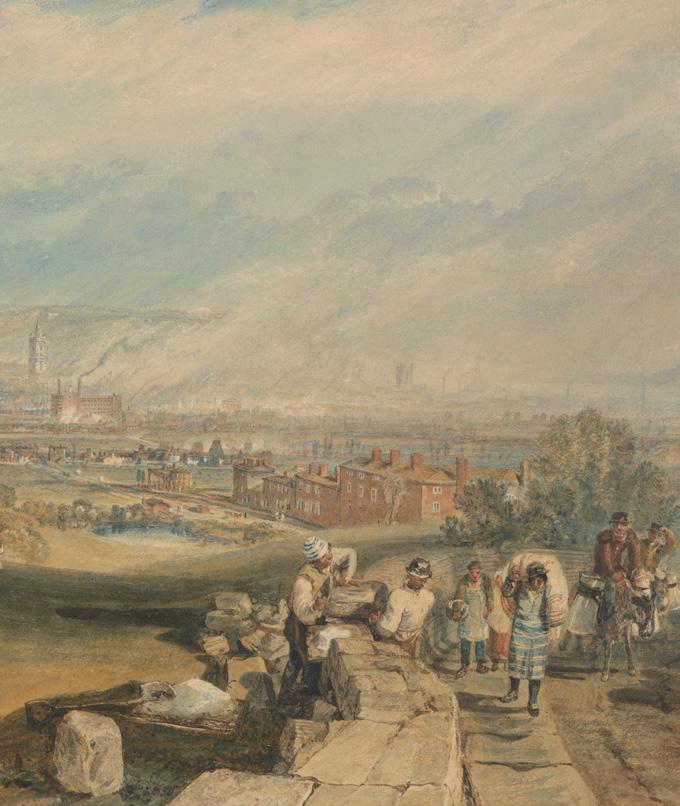
3 December 2019
Modern Art and Publishing between 1935 and 1955
Workshop held at the Paul Mellon Centre.
Sarah Victoria Turner (PMC), ‘Welcome and Introduction’
Session 1: Landscapes of Art Publishing
Chaired by Mark Hallett (PMC)
Valerie Holman (Independent), ‘Art Publishing: A Changing Landscape?’
Anna Nyburg (Imperial College, London), ‘Émigrés in Art Publishing’
Session 2: Journal Cultures
Chaired by Rachel Rose Smith (Independent)
Chris Mourant (University of Birmingham), ‘“No crystallised opinion”: British Periodicals and Modern Art Before 1914’
Caroline Maclean (Independent), ‘“A circus rider with his feet planted astride two horses”: The Battle between Abstraction and Surrealism in Unit One and Axis’
Clare Nadal (University of Huddersfield/ The Hepworth Wakefield), ‘Barbara Hepworth in British Journal and Print Culture, 1935–1950’
Session 3: Making and Breaking Formats
Chaired by Tom Powell (PMC)
Lucy Myers (Lund Humphries), ‘Promoting Modern Art and Design: The Development of Lund Humphries’ PostWar Publishing on Contemporary Artists’
Alan Powers (University of Kent/London School of Architecture), ‘Cropping and Bleeding: Modernism and Tradition in Book and Magazine Design’
11 December 2019
PMC Book Night
Mark Hallett, ‘Introduction to PMC Publishing’
Authors:
Matthew Dimmock, Elizabethan Globalism: England, China and the Rainbow Portrait
Marcia Pointon, Hanging the Head: Portraiture and Social Formation in Eighteenth-Century England
Sarah Thomas, Witnessing Slavery: Art and Travel in the Age of Abolition
Erika Balsom, Artists’ Moving Image in Britain Since 1989
Paul Mellon Centre 50th Anniversary Lecture Series, 2020
15 January David H. Solkin, ‘British Landscape Art of the Long Eighteenth Century: Reflections on a Contested Field’
29 January Charles Saumarez Smith, ‘50 Years of British Art in Museums’
12 February Griselda Pollock, ‘The Victorian Book I Never Wrote, or Why I Never Became a Specialist on British Art’
26 February Steven Brindle, ‘Architectural History after Summerson’
17 January 2020
George Stubbs: ‘all done from Nature’ A conference co-organised by the Paul Mellon Centre for Studies in British Art and MK Gallery, Milton Keynes, exploring the artistic achievement and legacy of George Stubbs in the context of the major monographic exhibition at MK Gallery.
Anthony Spira (MK Gallery), ‘Welcome and Introduction’
Session 1: Chaired by Martin Postle (PMC)
Alison Wright (Royal Holloway, University of London), ‘Everyone but Stubbs: Re-examining the Field of Georgian Animal Painting’
Helen McCormack (Glasgow School of Art), ‘Animalia, Autopsia, Natura: George Stubbs’s The Moose, 1770’
Marcus Coates (Artist), ‘Comparative Anatomies’
Session 2: Chaired by Lea van der Vinde (Mauritshuis)
Anthony Mould (Art Dealer), ‘George Stubbs and Portraiture; the ‘lacuna’ Years from c.1744 to c.1758’
Oliver Cox (University of Oxford), ‘The Anatomy of a Sporting Art Collection: The Many Lives of Stubbs’s Lord Torrington’s Hunt Servants setting out from Southill (c.1767)’
David Pullins (Metropolitan Museum of Art, New York), ‘Stubbs’s Figures and Grounds, Invitations to Collaborative Painting’
Poetry readings by Roger Robinson (Writer), ‘Stubbs’s Whistlejacket’, ‘Hambletonian, Rubbing Down’
Spring Research Lunch Series 2020
24 January Eva Bentcheva ‘Performing Transnationalisms in the Works of Rasheed Araeen, Prafulla Mohanti and Sutapa Biswas’
31 January Martina Droth and Paul Messier, ‘Bill Brandt & Henry Moore: Photography in Four Dimensions’
7 February Thomas Hughes, ‘Surface, Depth and Form: John Ruskin’s “The Nature of Gothic”’
21 February Isabelle Mooney, ‘Sculpting a Post-War Future: The Bombsite in Art School Education’
6 March Christian Berger, ‘Keith Arnatt’s Conceptualist Critique of Conceptual Art’
Spring Fellows Lunch Series 2020
10 March Tara Contractor, ‘Pre-Raphaelite Gold’
12 Academic Activities July 2019–June 2020
13–14 March 2020
Radical Materialities: Linder and Companion Histories
A conference hosted by Kettle’s Yard and the Paul Mellon Centre for Studies in British Art on the work of British artist Linder.
Day 1 at Murray Edwards College, Cambridge:
Andrew Nairne and Amy Tobin (Kettle’s Yard), ‘Welcome and Introduction’
Dawn Ades (University of Essex) and Linder, ‘In Conversation’
Session 1: Chaired by James Boaden (University of York)
Yuval Etgar (Luxembourg & Dayan, London & University of Oxford), ‘Under Covers: Feminist Strategies in Artists’ Magazines of the late 1970s in Britain and the USA’
Maria Elena Buszek (University of Colorado Denver), ‘Danger Came Smiling: Linder Sterling and Punk Feminism’
Session 2: Chaired by Alyce Mahon (University of Cambridge)
Francis Summers (University of Creative Arts, Rochester), ‘Profanation in the Field of Vision: Linder’s Food Porn’
Naomi Polonsky (Curator and Arts Writer), ‘Linder and Lust: The Aesthetics & Erotics of Pornography in Linder’s Photomontages’
Day 2 at Kettle’s Yard, Cambridge:
Session 3: Chaired by Anna Reid (PMC)
Adele Patrick (Glasgow Women’s Library), ‘Glamorous Excess and the Charms of Linderism: Episodes of Critical, Creative and Curatorial Clairvoyance’
Mark Bradley (University of Nottingham), ‘Linder, Layers and the “Lower Senses”: Classical Bodies, Sensation and Sensibilities in Linder Sterling’s Photomontage’
Session 4: Chaired by Amy Tobin (Kettle’s Yard)
Paul Clinton (Writer, Curator and Editor), ‘Rough Around the Edges: Linder On Class and Taste’
Adrian Shaw (Tate), ‘Performance as Refrain’
Amy Tobin (Kettle’s Yard), ‘Closing Remarks’
British Art Talks Podcast Series 2020
The British Art Talks podcast features new research and aims to enhance and expand knowledge of British art and architecture.
6 May, Episode 1: William Etty and the Classical Body
Hosted by Anna Reid
Guest Speakers: Cora Gilroy-Ware and Mary Beard
13 May, Episode 2: ‘What will survive of us is love’: Memory and Emotion in Late-Medieval England
Hosted by Anna Reid
Guest speaker: Jessica Barker
27 May, Episode 3: The English Carthusians and the Art of Abstinence
Hosted by Anna Reid
Guest Speaker: Julian Luxford
3 June, Episode 4: Hard Times and Late Victorian Art
Hosted by Anna Reid
Guest Speaker: Alex Potts
10 June, Episode 5: Exploring London’s Art Scene in the 1960s
Hosted by Anna Reid
Guest Speakers: Lisa Tickner and Mark Hallett
17 June, Episode 6: ‘Things in their natural surroundings’?: Marketing the British Country House as Home
Hosted by Anna Reid
Guest Speaker: Kate Retford
24 June, Episode 7: The Medicinal Garden
Hosted by Anna Reid
Guest Speakers: Clare Hickman, Claire Preston and Carole Rawcliffe
Summer Fellows Lunch 2020
19 May Adrienne Rooney, ‘“Starting from that earth”: Humanized Landscape, Rastafarian Painting and Anticolonial Visions in 1970s Kingston’
Summer Research Lunch Series 2020
29 May Evelyn Whorrall-Campbell, ‘Uncertain Grounds and Absent Figures in Tina’s Keane’s Faded Wallpaper (1988)’
13 Paul Mellon Centre Annual Report 2019–2020
(Previous spread) Joseph Mallord William Turner, Leeds, 1816, watercolour, scraping out and pen and black ink on medium, slightly textured, cream wove paper, 29.2 x 43.2 cm. Yale Center for British Art, Paul Mellon Collection, B1981.25.2704
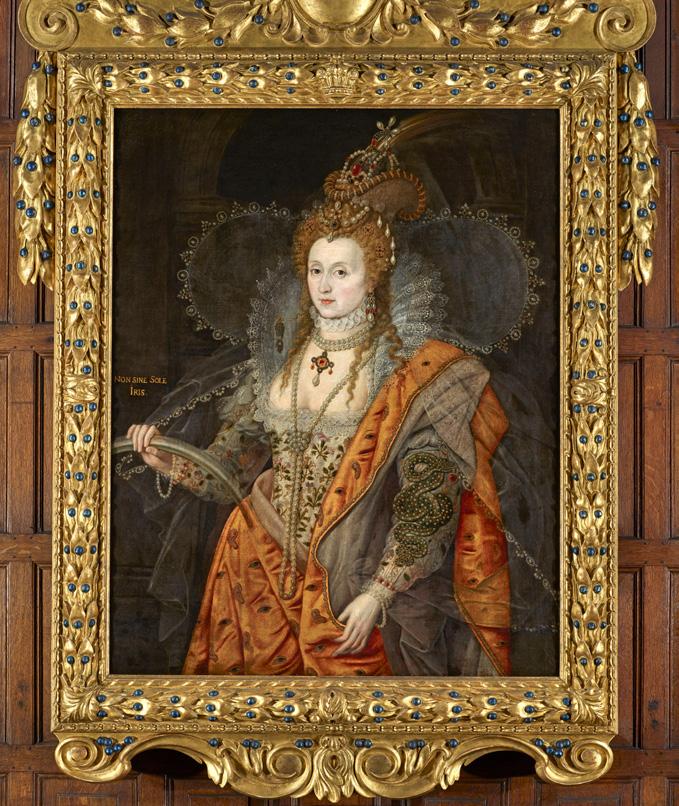
Print Publications
This year has produced a suite of publications that is particularly remarkable for its chronological scope. Though the Centre has always been keen to publish world-class scholarship on British art of any period, it has traditionally been best known for books on eighteenth- and nineteenth-century subjects. The year 2019–20 expressed the Centre’s new enthusiasm for expanding the list in various ways, particularly into the twentieth and twenty-first centuries. It is a slow process to broaden a list from its original core area in a sustainable and meaningful way, but progress is certainly being made, and this year has seen further evidence of that.
With books that explore the tenth-century Irish high crosses, the thousand-year-old Westminster Abbey and the Roman origins of Oxford Street, we have maintained our tradition of publishing on the early history of British art and architecture.
We have also addressed topics from between the seventeenth and twentieth centuries. The emerging ambitions of the Elizabethan court for engagement with the wider world; Christopher Wren’s tracing of the origins of classical architecture to the stonemasons of the biblical East; the power of aquatints to bring knowledge of distant civilisations to eighteenth-century audiences; the cultural and political importance of eye-witness representations of the transatlantic slave trade; and the sensual engagement of Romantic sculptors with Greco-Roman art, have all been among the subjects deftly and sensitively investigated by members of this year’s cohort of exceptional scholars. And extending our reach ever further forward in time, 1960s London received a brilliant and kaleidoscopic exploration as a vibrant hub of artistic practice, and a team of editors and contributing authors investigated the evolution of the moving image from a marginalised medium of British art into one of its most vital areas of artistic practice.
Beyond the publication of our front-list print titles, we are also delighted to have become contributing members of Yale University Press’s Art & Architecture ePortal, which has allowed us the opportunity to make available various important titles from our backlist in innovative new ways.
Marcus Gheeraerts the Younger?, Rainbow Portrait of Queen Elizabeth I, c.1602. Hatfield House, Hertfordshire
15 Paul Mellon Centre Annual Report 2019–2020
Print Publications
July 2019–June 2020
Erika Balsom, Lucy Reynolds and Sarah Perks (eds.)
Artists’ Moving Image in Britain Since 1989
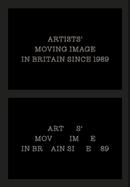
September 2019
Sarah Thomas
Witnessing Slavery: Art and Travel in the Age of Abolition
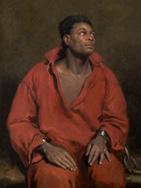
September 2019
David Cannadine (ed.)
Westminster Abbey: A Church in History
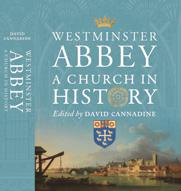
October 2019
Matthew Dimmock
Elizabethan Globalism: England, China and the Rainbow Portrait
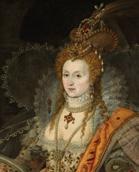
October 2019
Douglas Fordham
Aquatint Worlds: Travel, Print, and Empire, 1770–1820

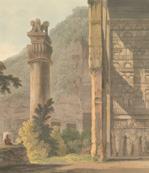
November 2019
Cora Gilroy-Ware
The Classical Body in Romantic Britain
April 2020
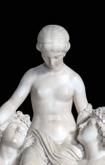
Aquatint Worlds TRAVEL, PRINT, AND EMPIRE DOUGLAS FORDHAM Elizabethan Globalism
China and the Rainbow Portrait MATTHEW DIMMOCK Sarah Thomas WITNESSING Art and Travel in the Age of Abolition
England,
SLAVERY
WESTMINSTER ABBEY A Church in History Edited by David Cannadine A comprehensive and authoritative history that explores the significance of one of the most famous buildings and institutions in England Westminster Abbey was one of the most powerful churches in Catholic Christendom before transforming into Protestant icon of British national and imperial identity. Celebrating the 750th anniversary of the consecration of the current Abbey church building, this book features engaging essays by a group of distinguished scholars that focus on different, yet often overlapping, aspects of the Abbey’s history: its architecture and monuments; its Catholic monks and Protestant clergy; its place in religious and political revolutions; its relationship to the monarchy and royal court; its estates and educational endeavours; its congregations and its tourists. Clearly written and wide-ranging in scope, this generously illustrated volume is a fascinating exploration of Westminster Abbey’s centuries-long history and of the meaning, significance and impact of the Abbey within society, both in Britain and beyond. Contributors to the Volume Sir David Cannadine is Dodge Professor of History at Princeton University, President of the British Academy and Editor of the Oxford Dictionary of National Biography Paul Binski fba is Professor of the History of Medieval Art at the University of Cambridge. James G. Clark is Professor of History at the University of Exeter. Joe Mordaunt Crook is Emeritus Professor of Architectural History at the University of London. The Very Reverend Dr John Hall is Dean of Westminster, an office he has held since 2006 Sir Diarmaid MacCulloch is Professor Emeritus of the History of the Church at the University of Oxford. Julia F. Merritt is Associate Professor of History at the University of Nottingham. Henry Summerson was Medieval Research Editor for the Oxford Dictionary of National Biography 1993–2018 and latterly responsible for all coverage before 1600 William Whyte is Professor of Social and Architectural History at the University of Oxford and a Fellow of St John’s College. Jacket Illustrations Front: Samuel Scott, The Building of Westminster Bridge (detail), 1742 Metropolitan Museum of Art, New York. Purchase, Charles B. Curtis Fund and Joseph Pulitzer Bequest, 1944 crown from the anonymous portrait of Richard II, late 1390s, © Dean and Chapter of Westminster; rose window design from medieval tile from the pavement of the chapter house, © Dean and Chapter of Westminster; coat of arms of Westminster Abbey, © Dean and Chapter of Westminster. Back: Canaletto, Westminster Abbey with a Procession of the Knights of the Bath (detail), 1749 © Dean and Chapter of Westminster. Jacket design by Matt Broughton Printed in China Final Westminster a-w rev 1.indd 所有頁面 15/5/2019 下午2:31 THE CLASSICAL BODY IN ROMANTIC BRITAIN CORA GILROY-WARE 16
IN SEARCH OF EASTERN ANTIQUITY
Vaughan Hart

Christopher Wren: In Search of Eastern Antiquity
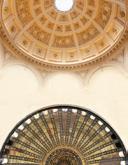
April 2020
Andrew Saint Survey of London: Oxford Street, Volume 53
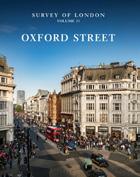
April 2020
Roger Stalley
Early Irish Sculpture and the Art of the High Crosses

May 2020
Lisa Tickner
London’s New Scene: Art and Culture in the 1960s
June 2020
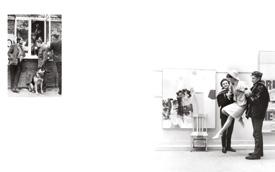
London’s New Scene ART AND CULTURE IN THE 1960s Lisa Tickner e arly rish s culpture This landmark study of Irish high crosses focuses on the carvings of an unnamed artist, the ‘Muiredach Master’, whose monuments – completed in the early years of the tenth century – deserve a place in the history of art alongside the Book of Kells. Drawing on a wealth of recent research, Roger Stalley describes in vivid detail how the crosses were made, where they were carved and how they were lifted into place. His lively prose situates the works in their context, identifying patrons and exploring their motives, and venturing to understand what the crosses may have meant to those who gazed at them a thousand years ago. In doing so, Stalley questions preconceived notions about the imagery of the crosses, including the extent to which they were inspired by images from abroad. is a Fellow Emeritus at Trinity College, Dublin EARLY IRISH SCULPTURE AND THE ART OF THE HIGH CROSSES stalley IN SEARCH OF EASTERN ANTIQUITY VAUGHAN HART WREN CHRISTOPHER In this revelatory study of one of the great architects in British history, Vaughan Hart considers Christopher Wren’s (1632–1723) interest in Eastern antiquity and Ottoman architecture, an interest that would animate much of his theory and practice. As the early modern understanding of antiquity broadened to include new discoveries at Palmyra and Persepolis, Wren disputed common assumptions about the European origins of Classical and Gothic architecture, tracing these building traditions not to the Greeks or Germans but to the stonemasons of the biblical East. In a deft analysis, Hart contextualises Wren’s use of classical elements columns, domes and cross plans – within his enthusiasm for the East, and the broader Anglican interest in the Eastern church. A careful study of diary records reappraises Wren’s working relationship with Robert Hooke (1635–1703), who shared in many of Wren’s theoretical commitments. The result is a new, deepened understanding of Wren’s work. VAUGHAN HART is the professor of architecture at the University of Bath. WREN CHRISTOPHER
VAUGHAN HART
WREN CHRISTOPHER
17 Paul Mellon Centre Annual Report 2019–2020
John Simpson, The Captive Slave (detail), 1827, oil on canvas, 127 x 101.5 cm. Art Institute of Chicago.
British Art Studies
During the period covered by this report, four issues of British Art Studies, the Centre’s peer-reviewed and open access journal, were published online. The journal was founded in 2015 and is co-published with the Yale Center for British Art.
Issue 13 (30 September 2019) was a themed issue, containing sixteen articles and features as a major output of the Centre’s London, Asia research project, which investigates London’s role as a key, yet under-explored, site in the construction of art-historical narratives in Asia. The next three issues were all open issues. Issue 14 (29 November 2019) was notable for containing the first ever commission of new work by an artist for BAS. For that issue’s cover, James Richards produced a series of GIFs that meditate on the ambiguous, often dangerous, interplay between the internet and personal health. Issue 15 (27 February 2020) featured two films about the wartime and post-war photography of Bert Hardy for Picture Post, alongside a methodological reflection on film as a means to conduct and communicate art-historical research. In Issue 16 (30 June 2020), we published a Conversation Piece feature titled ‘Luxury and Crisis: Redefining the British Decorative Arts’, convened by curator Iris Moon, and an editorial outlining our plans to elevate the voices of Black scholars, curators and artists through the journal.
In February 2020, user experience testing was carried out on the journal’s website by the City Interaction Lab at City, University of London. Users from specific demographics amongst the journal’s readership came into the Lab and were observed by researchers as they completed a series of tasks within the BAS website. This study highlighted numerous possible improvements for the site, which will be implemented in 2021 as part of a broader redesign.
Later in February, the journal also welcomed Sria Chatterjee (Max-Planck Kunsthistorisches 4A Laboratory, Berlin) as a Contributing Editor on a one-year cover position while Sarah Victoria Turner, one of our Editors-in-Chief, was on parental leave. Sria is the first editor to join BAS who is not also a member of staff at the Centre or the YCBA. In the first months of her tenure, this immediately made for a valuable collaboration, generating new conversations and content for the journal.
18
Ananda K. Coomaraswamy, Finger and toe postures in ancient and medieval Indian sculptures (detail), undated, from Ananda K. Coomaraswamy, “Hands and Feet in Indian Art”, The Burlington Magazine for Connoisseurs 24, no. 130 (1913): 204–207. Courtesy of The Burlington Magazine (all rights reserved). Featured in British Art Studies, Issue 15
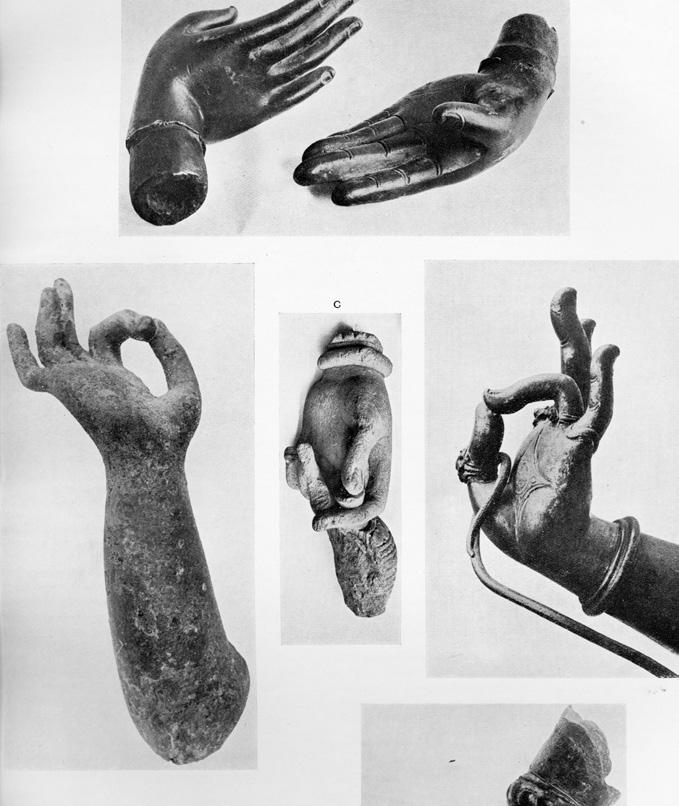
British Art Studies
July 2019–June 2020
British Art Studies, Issue 13: London, Asia, Exhibitions, Histories
September 2019
Cover Collaboration
‘Taking Space for Asian Diaspora Narratives’, a cover collaboration curated by Annie Jael Kwan
‘26 x 2 = 0’, by Bettina Fung
‘“like a flower paddle my teeth”’, by Ada Hao
‘Yellow Peril’, by Nicholas Tee
Articles
‘Instant Malaysia: Imagining a Nation at the Commonwealth Institute’, by Kelvin Chuah
‘“A Bridge between the Two Worlds”: Exhibitions of Malaysian Art at the Commonwealth Institute’, by Sarena Abdullah
‘Mapping Decolonisation: Exhibition Floor Plans and the “End” of Empire at the Commonwealth Institute’, by Claire Wintle
‘Journeying through Modernism: Travels and Transits of East Pakistani Artists in Post-Imperial London’, by Lotte Hoek and Sanjukta Sunderason
‘“Exciting a Wider Interest in the Art of India”: The 1931 Burlington Fine Arts Club Exhibition’, by Brinda Kumar
‘Researching Exhibitions of South Asian Women Artists in Britain in the 1980s’, by Alice Correia
Features
‘Why Exhibition Histories?’, a conversation piece convened by Saloni Mathur
‘Exhibitions in Print’, an interview between Sharmini Pereira and Sneha Ragavan
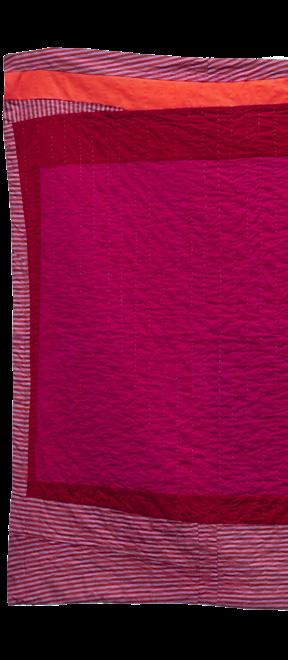
‘Curating the Cosmopolis’, an interview between Iwona Blazwick and Rattanamol Singh Johal
‘Unlearning the Modern’, an interview between David Elliott and Hilary Floe
British Art Studies, Issue 14: open issue November 2019
Cover Collaboration
‘on the side of the disease and not the cure’, a cover collaboration with films by James Richards, introduced by Sarah Perks
Articles
‘“The Assemblage of Specimens”: The Magazine as Catalogue in 1970s Britain’, by Samuel Bibby
‘“Irrigated Neither by the Seine Nor by the Thames”: Jack B. Yeats’s Reception in London’, by Nathan O’Donnell
‘The Texture of Capitalism: Industrial Oil Colours and the Politics of Paint in the Work of G. F. Watts’, by Kirsty Sinclair Dootson
20
Annabelle Harty and Sheelagh Boyce, Quilt 8 (front), 2018, cotton and bamboo, 115cm x 115cm. Courtesy of Annabelle Harty and Sheelagh Boyce (all rights reserved). Featured in British Art Studies, Issue 16
‘The Ecosystem of Exhibitions: Venues, Artists, and Audiences in Early Nineteenth-Century London’, by Catherine Roach
‘“The Sense of Nearness”: Harriet Hosmer’s Clasped Hands and the Materials and Bodies of NineteenthCentury Life Casting’, by Katherine Fein
British Art Studies, Issue 15: open issue
February 2020
Cover Collaboration
‘A Visionary Sense of London’, a cover collaboration by Laura Grace Ford
Articles
‘Bert Hardy: Exercises with Photography and Film’, by Lynda Nead and John Wyver
‘Postindustrialism and the Long Arts and Crafts Movement: Between Britain, India, and the United States Of America’, an Objects in Motion article by Sria Chatterjee
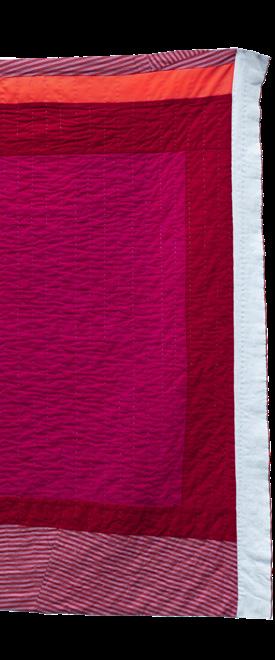
‘Reason Dazzled: The All-Seeing and the Unseeing in Turner’s Regulus’, by Matthew Beaumont
‘Signs of a Struggle: Process, Technique, and Materials in the Early Work of Mark Gertler, 1911–18’, by Aviva Burnstock and Sarah MacDougall
‘Skin and Bone: Surface and Substance in Anglo-Colonial Portraiture’, by David Hansen
British Art Studies, Issue 16: open issue
June 2020
Editorial
Cover Collaboration
‘Bill Brandt: Photography and the Printed Page’, a cover collaboration by Martina Droth, Paul Messier, Richard Caspole and Robert Hixon
Articles
‘“The Bold Adventure of All”: Reconstructing the Place of Portraits in Interregnum England’, by Helen Pierce
‘The Social Economics of Artistic Labour: A Technical Case Study of Henry Monro’s Disgrace of Wolsey (1814)’, by Anna Cooper and Martin Myrone
Conversation Piece
‘Luxury and Crisis: Redefining the British Decorative Arts’, a conversation piece coordinated by Iris Moon
One Object
‘New Approaches to St Stephen’s Chapel, Palace of Westminster’, by Tim Ayers and John Cooper
‘Virtual St Stephen’s: The Medieval Model and the Art Historian’, by Tim Ayers
‘Mapping the Unknown: Using Incomplete Evidence to Craft Digital ThreeDimensional Models of St Stephen’s’, by Anthony Masinton and James Jago
‘The Wall Paintings at St Stephen’s Chapel, Westminster Palace: Recent Imaging and Scientific Analysis of the Fragments in the British Museum’, by Helen Howard, Lloyd de Beer, David Saunders and Catherine Higgitt
21 Paul Mellon Centre Annual Report 2019–2020

22 Running Head
Fellowships and Grants
Autumn 2019 saw the introduction of the Collaborative Project Grant, an award of up to £40,000, which is designed to support the early stages of a collaborative research project between two or more organisations.
After the Fellowships, Grants & Communications Manager met with the Director and Deputy Director of the British School at Rome in October 2019, revisions were made to the Rome Fellowship remit. These included increasing available funding and a widening of the applicant remit. A new fellowship to mark the Centre’s fiftieth anniversary was also introduced. This £10,000 award, titled the PMC Research Collections Fellowship, is designed to support research on the development of art history as a discipline in the UK, using the Centre’s own library and archive collections.
In response to the Covid-19 crisis, a new emergency funding programme intended to sustain research, writing and thinking on British art and architecture was put in place in May 2020 to help individuals and institutions affected by the pandemic. Research Continuity Grants (awards of £10,000) were designed to enable institutions to continue planning and conducting curatorial and scholarly research projects during the year. Research Continuity Fellowships (awards of £5,000) were designed to support individuals in conducting their writing and research in the face of the financial and scholarly challenges generated by the crisis. There were 215 applications for these awards, of which 28 (10 grants and 18 fellowships) were successful.
The Conservation Fellowship for the academic year 2019–20 of £25,000 was awarded to Barts Heritage, towards the condition survey and treatment trials of the Great Hall and the Hogarth Stair at St Bartholomew’s Hospital.
23 Paul Mellon Centre Annual Report 2019–2020
Derek Jarman, still from Journey to Avebury, 1973, Super 8, colour, 13 min. 29 sec. LUMA Foundation. Event Support Grant & Publication Grant awarded to IMMA for the symposium ‘Remembering Derek Jarman’ and the book Derek Jarman: PROTEST! published in 2020
Fellowships and Grants
July 2019–June 2020
Autumn 2019
At the October 2019 meeting of the Advisory Council, the following grants and fellowships were awarded:
Collaborative Project Grants
Birkbeck and the National Trust were awarded £40,000 to support the collaborative research project ‘Unlocking the Photographic Archive: Identity & History in the National Trust’s Photography Collections’
Impermanence and University of Bristol were awarded £40,000 to support the collaborative research project ‘Staging BLAST!: Cabaret and the Modernist Magazines’
Conservation Fellowship
Barts Heritage was awarded £25,000 towards the condition survey and treatment trials of the Great Hall and the Hogarth Stair at St Bartholomew’s Hospital
Curatorial Research Grants
Armagh Robinson Library was awarded £40,000 to help support a research curator to research the Rokeby Collection of Prints at Armagh Robinson Library
Autograph Association of Black Photographers was awarded £37,000 to help support a research curator to work on the project ‘Rotimi Fani-Kayode: A Retrospective’
Colchester and Ipswich Museums were awarded £30,000 to help support a research curator to work on the project ‘The Constable Connection: Mapping the Artist’s Early Suffolk Foundation’
The South Asia Collection Museum was awarded £40,000 to help support a research curator to work on ‘The Gwillim Project: Women, Environment and Networks of Knowledge and Exchange in Early Nineteenth-Century Madras’
Digital Project Grants
Bartlett School of Architecture, University College London was awarded £39,000 towards creating a transcribed and searchable open access database of Robert and James Adams’ Grand Tour letters and writings, 1754–63
Derby Museums Trust was awarded £39,000 to support the online catalogue Joseph Wright of Derby Collection at Derby Museums
Event Support Grants
Elizabeth Montagu Correspondence Online was awarded £800 to support the conference ‘The Prospect of Improvement: The Bluestocking Landscape’
Fitzwilliam Museum, University of Cambridge was awarded £2,500 to support the conference ‘Hayley2020’
Four Corners was awarded £1,700 to support the symposium ‘Another Eye: Women Exile Photographers’
Irish Museum of Modern Art was awarded £1,600 to support the symposium ‘Remembering Derek Jarman, Then and Now’
The Victorian Society was awarded £2,600 to support the conference ‘French Architecture and the English, 1835–1914’
Loughborough University was awarded £3,000 to support the conference ‘“… In or about 1970 …”: Artists, Writers, and Feminist Thought’
Manchester Metropolitan University was awarded £2,900 to support the conference ‘Celebrating Reproductions: Past, Present and Future’
School of Art History, University of St Andrews was awarded £2,800 to support the symposium ‘The Itinerant Image: Printmaking between Art and Science in Early Modern Britain’
University of St Andrews was awarded £2,100 to support the symposium
‘Maud Sulter: Significant Others, Significant Women’
University of York was awarded £1,000 to support the conference ‘Pre-Raphaelite Sisters: Making Art’
Publication Grants
Robyne Calvert was awarded £3,000 towards publishing The Mack: Charles Rennie Mackintosh and the Glasgow School of Art
24
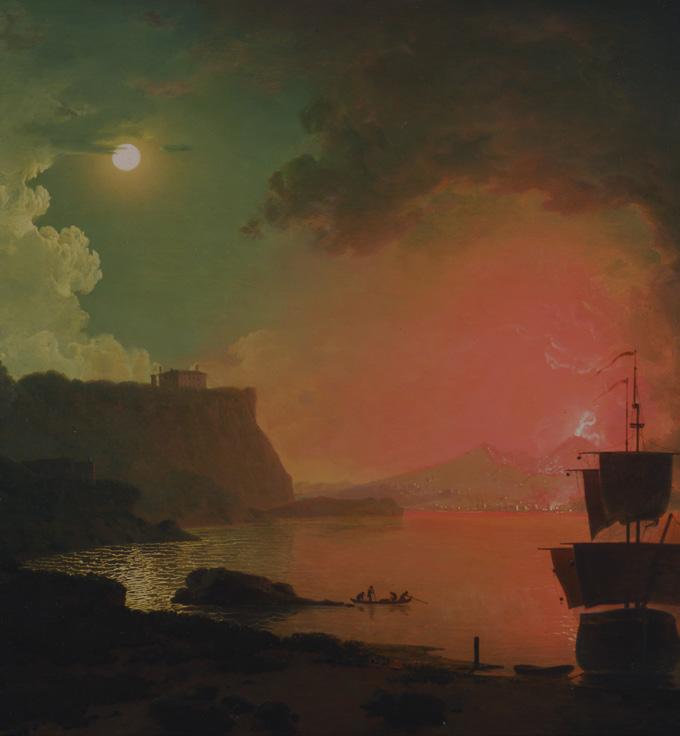
25
Joseph Wright of Derby, Vesuvius from Posillipo, c.1788, oil on panel, 63.5 x 83.8 cm. Yale Center for British Art, Paul Mellon Collection, B1974.3.34. Digital Project Grant awarded to Derby Museums Trust for the online catalogue Joseph Wright of Derby Collection at Derby Museums
Church Monuments Society was awarded £2,350 towards publishing Divided in Death: The Iconography of English Medieval Heart and Viscera Monuments
Turner Contemporary was awarded £7,000 towards publishing Place, Space and Who
Diaphanes and Stephen Barber were awarded £8,750 costs towards publishing Muybridge’s Projections
Eddie Duggan was awarded £200 towards publishing an article on early printed board games in Board Game Studies Journal
Anne Dulau was awarded £3,000 towards publishing Old Ways and New Roads: Travels in Scotland, c.1720–1830
Alice Eden and Leamington Spa Art Gallery and Museum were awarded £10,000 towards publishing Modern Pre-Raphaelite Visionaries: British Art, 1880–1930
Ian Dudley was awarded £1,000 towards publishing the article ‘Olmec Colossal Heads in the Paintings of Aubrey Williams’
Jessica Fay was awarded £1,560 towards publishing The Letters of Sir George and Lady Beaumont to William and Dorothy Wordsworth, 1803–1829
Natalie Ferris was awarded £1,000 towards publishing Abstraction in Post-War British Literature, 1945–1980
Hayward Gallery was awarded £3,500 towards publishing Not Without My Ghosts
Harvey Miller/Brepols was awarded £7,000 towards publishing East Anglia’s Late Medieval Screens: Patterns of Production
Gordon Higgott was awarded £3,000 towards publishing Drawings by Edward Pearce Senior: Painter, Decorator and Interior Designer
John Libbey Publishing and David Curtis were awarded £6,000 towards publishing London Art Labs and the Avant-garde of the 1960s
Kettle’s Yard and Amy Tobin were awarded £9,950 costs towards publishing Linderism
Séan Kissane and the Irish Museum of Modern Art were awarded £10,000 towards publishing Derek Jarman: PROTEST!
Ranald Lawrence was awarded £3,000 towards publishing The Victorian Art School
Liverpool University Press was awarded £5,000 towards publishing William Whitfield
The New Art Gallery Walsall was awarded £7,000 towards publishing Keith Piper (full title t.b.c.)
Nathan O’Donnell was awarded £480 towards publishing Wyndham Lewis’s Cultural Criticism and the Infrastructures of Patronage
Paul Holberton and Jacqueline Riding were awarded £6,500 towards publishing Hogarth and the Jacobites
Pennsylvania State University Press was awarded £5,000 towards publishing Scented Visions: Smell in Art, 1850–1914
Dorothy Price was awarded £3,000 towards publishing Framing the Critical Decade: After the Black Arts Movement
Hollie Price was awarded £2,000 towards publishing Picturing Home: Domestic Life and Modernity in 1940s British Film
Pandora Syperek was awarded £360 towards publishing the article ‘Hope in the Archive: Indexing the Natural History Museum’s Ecologies of Display’
University of Leeds was awarded £4,000 towards publishing Gestural Abstraction
Yale University Press and Cicely Robinson were awarded £9,000 towards publishing Henry Scott Tuke
Patrick Zamarian was awarded £2,750 towards publishing The Architectural Association in the Postwar Years
Research Support Grants
Sara Ayres was awarded £1,100 for research on ‘The Reception of William Hogarth (1697–1764) at the Eighteenth-Century Danish Court’
Gemma Brace was awarded £1,000 for research on ‘“And I Dance …” Paule Vézelay: Bristol – Paris – London’
Elizabeth Browne was awarded £2,000 for research on ‘In the Mold of Clodion: Reproduction and the Sculptor’s Legacy’
Sria Chatterjee was awarded £2,000 for research on ‘Colonial Weather: The Politics of Painting in Britain’s Australian and Indian Colonies’
Charlene Heath was awarded £2,000 for historical, archival research on British artist and photographer Jo Spence
Tara Kuruvilla was awarded £2,000 for research on ‘Chapter 1: “A HuggerMugger Collection of Articles”’
Lou Le Joly was awarded £1,200 for research on ‘Class and Gender Politics in the Artistic Production of the Suffrage Atelier and the Women’s Freedom League, 1907–1914’
Rebecca Morrison was awarded £1,000 for research on ‘Miss Mary Rein, MantuaMaker to the Theatre Royal Drury Lane’
Anna Myers was awarded £1,400 for research on ‘Englishness and EighteenthCentury Shakespeariana at the Folger Shakespeare Library’
Allison Pappas was awarded £2,000 for research on ‘Photography’s First Impressions: W. H. F. Talbot, J. F. W. Herschel, and Experimental Rhetoric’
Tor Scott was awarded £1,000 for research on ‘The Life and Work of British Surrealist Edith Rimmington’
Noah Smith was awarded £1,600 for research on ‘A Re-examination of the Oxford Chest: Migration and CrossChannel Cultural Exchange between Flanders and England in the Later Middle Ages’
26 Fellowships and Grants July 2019–June 2020
Ego Ahaiwe Sowinski was awarded £2,000 for research on ‘Beyond the Monolith: Recasting Ronald Moody (1900–1984)’
Divya Subramanian was awarded £700 for research on ‘Global Townscape: The Rediscovery of Urban Life in the Late Twentieth Century’
Andrew Wyld Research Support Grants
Victoria Hepburn was awarded £2,000 for research on ‘William Bell Scott as Illustrator’
Eleanore Neumann was awarded £2,000 for research on ‘The Intersection of Landscape and Botany in Maria Graham’s Drawings from South America, 1821–1825’
Spring 2020
At the March 2020 meeting of the Advisory Council, the following grants and fellowships were awarded:
Senior Fellowships
Viccy Coltman (University of Edinburgh) was awarded £40,000 for the project ‘A Martial Race: Scots in Military Service, 1759–1830s’
Douglas Fordham (University of Virginia) was awarded £40,000 for the project ‘Aboriginal Printmaking and the Colonial Archive’
Anthony Geraghty (University of York) was awarded £40,000 for the project ‘The Natural Vitruvians – Wren, Vanbrugh, Hawksmoor: English Baroque Architecture Reconsidered’
Mid-Career Fellowships
Tabitha Barber (Tate Britain) was awarded £15,000 for the project ‘Mary Beale’
Nick Beech (University of Westminster) was awarded £15,000 for the project ‘From Progress to Possibliity: The Urban Imagination of the British New Left, 1956–1964’
Ben Burbridge (University of Sussex) was awarded £15,000 for the project ‘Partial Recall: British Art Remembers Rave, 1994–2018’
Catherine Grant (Goldsmiths, University of London) was awarded £15,000 for the project ‘Women and Creativity: Legacies of Consciousness-Raising in Feminism and Art’
Victoria Horne (Northumbria University) was awarded £15,000 for the project ‘Mediating Art: Feminist Periodical Culture in Britain, 1970–2000’
Ulrike Kern (Kunstgeschichtliches Institut) was awarded £15,000 for the project ‘Art and Continent in England 1573–1715: Cultural Transmission and the Origins of the English Art Vocabulary’
Alexia Petsalis-Diomidis (University of St Andrews) was awarded £15,000 for the project ‘The British Art of Travel: Thomas Burgon (1787–1858) and the Classical Landscape’
Sam Rose (University of St Andrews) was awarded £15,000 for the project ‘Modern Naturalisms: Fry, Gluck, Hockney’
Léa-Catherine Szacka (University of Manchester) was awarded £15,000 for the project ‘A World Wide Book: Charles Jencks and The Language of Post-Modern Architecture, 1977–1991’
Clare Taylor (The Open University) was awarded £15,000 for the project ‘Gilt Leather Rooms: Decorating with Leather Hangings in Britain, c.1600–c.1800’
Wenny Teo (Courtauld Institute of Art) was awarded £15,000 for the project ‘Kim Lim: Forms of Resistance and Relief’
Postdoctoral Fellowships
Alice Butler was awarded £10,000 for the project ‘Touching Desire: Kleptomania in Recent and Contemporary Feminist Art’
David Challis (University of Melbourne) was awarded £10,000 for the project ‘Samuel Courtauld and the Economics of Interwar Art Collecting in Britain’
Tom Day (University of Edinburgh) was awarded £10,000 for the project ‘Tamara Krikorian: Sculpture Against Television’
Lloyd de Beer (British Museum) was awarded £10,000 for the project ‘Alabaster Sculpture of Medieval England: Imagery, Trade, Iconoclasm, and Reuse’ Flora Dunster (University of Sussex) was awarded £10,000 for the project ‘The Queer Futures of British Lesbian Photography, 1987–1994’
Christina Faraday (University of Cambridge) was awarded £10,000 for the project ‘Liveliness in English Visual Culture, c.1560–c.1630’
Katharine Harrison (University of York) was awarded £10,000 for the project ‘Reading the St Cuthbert Window’
Georgia Haseldine (Queen Mary University of London and National Portrait Gallery) was awarded £10,000 for the project ‘Portraying Radicals: Reform and Representation, 1760–1819’
Catherine Jane Howe (Courtauld Institute of Art) was awarded £10,000 for the project ‘Francis Bacon’s French Influences’
Amy Jeffs (University of Cambridge) was awarded £10,000 for the project ‘Art, Myth, War: Illustrating Secular Literature in England, 1280–1340’
Elspeth Mitchell was awarded £10,000 for the project ‘Girl, Movement, Image: Moving Image Artworks and Feminism (1977–1997)’
William Dominic Francis Parker (University of East Anglia) was awarded £10,000 for the project ‘Edwardian Aestheticism: Victorian Art Writing in Modernist Britain, 1890–1920’
Sophie Read (Bartlett School of Architecture, University College London) was awarded £10,000 for the project ‘Soane the Lecturer: Through his Lecture Performances on Architecture at the Royal Institution in London, 1817–1820’
Rachel Stratton (Yale Center for British Art) was awarded £10,000 for the project ‘Grammars of Form: Pop Art, Abstraction and Language’
27 Paul Mellon Centre Annual Report 2019–2020
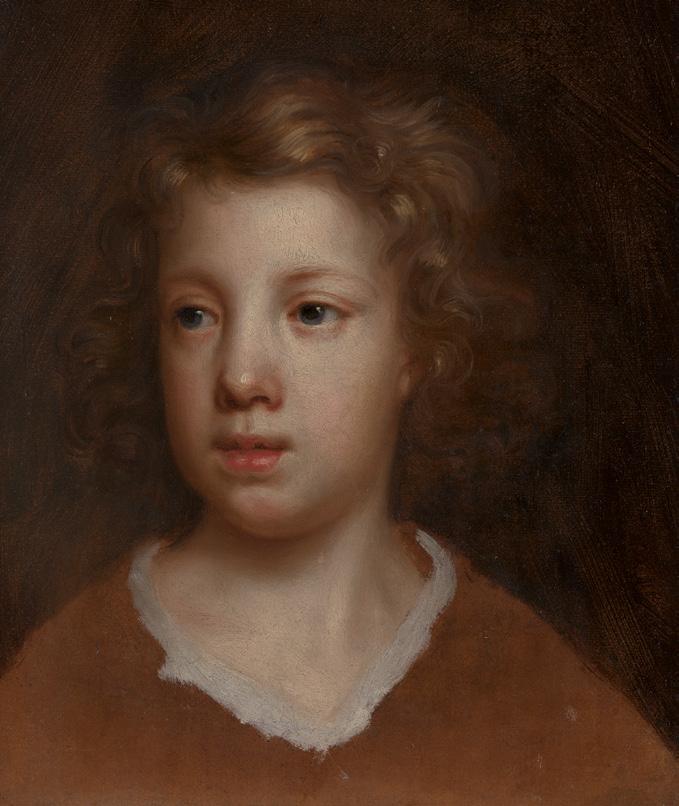
Sally Woodcock (Centre for Research in the Arts, Social Sciences and Humanities, University of Cambridge) was awarded £10,000 for the project ‘The Starving Artist: The Romance and Reality of Suffering for Art in the Long, Hard Nineteenth Century’
Junior Fellowships
Jess Bailey (University of California, Berkeley) was awarded £7,500 to conduct research in the UK for the project ‘Precarious Lines: Violence, Masculinity, and Desire in FourteenthCentury Visual Cultures of Gunpowder’
Victoria Hepburn (Yale University) was awarded £7,500 to conduct research in the UK for the project ‘William Bell Scott’s Victorian Art Worlds’
Tara Kuruvilla (Columbia University) was awarded £7,500 to conduct research in the UK for the project ‘“Disjecta Membra”: The Fragmentation of the India Museum and the Colonial Construction of Knowledge over the Long Nineteenth Century’
Eleanore Neumann (University of Virginia) was awarded £7,500 to conduct research in the UK for the project ‘The Global Landscapes of Maria Graham (1785–1842)’
Duccio Nobili (Scuola Normale Superiore, Pisa) was awarded £7,500 to conduct research in the UK for the project ‘Ideology of Sculpture: Crisis and Survival of a Craft in Italy, 1967–1974’
Shweta Raghu (Yale University) was awarded £7,500 to conduct research in the UK for the project ‘Coastal Vision and the Negotiated Arts of Coromandel, 1610–1798’
Lindsay Wells (University of Wisconsin–Madison) was awarded £7,500 to conduct research in the UK for the project ‘Plant-Based Art: Indoor Gardening and the British Aesthetic Movement, 1860–1914’
Jennifer Wu (University of North Carolina at Chapel Hill) was awarded £7,500 to conduct research in the UK for the project ‘Conceptualizations of the Surface in Tudor Portraiture’
Terra–PMC Fellowship
Dawn Pereira (University of East London) was awarded £9,500 for the project ‘Beyond William Mitchell’s British “Colourful Crusade”: Creating Art for the Urban Landscapes of the United States (1972–76)’
Wilfried E. Keil (Ruprecht-KarlsUniversity Heidelberg) was awarded £20,000 to spend time at the British School at Rome to conduct research for the project ‘Robert Turnbull Macpherson and his Photographic Verdute of Rome in Comparison to Works of Other Photographers in Time’
PMC Research Collections Fellowship
Joshua Mardell was awarded £10,000 for the project ‘Finding a Historiography for Gavin Stamp’
Event Support Grants
City and Guilds of London Art School was awarded £1,500 to support the ‘Material Matters: Clay’ symposium
The Courtauld Institute of Art was awarded £1,000 to support the ‘Photography and Architecture: Research and Pedagogy in Nineteenth- and Twentieth-Century Britain’ workshop
Downing College, University of Cambridge was awarded £1,000 to support the ‘Representation: The Visibility of Women in College Art Collections’ symposium
Focal Point Gallery was awarded £1,600 to support the ‘International Modernism and the Worker Village: from Essex to Shanghai’ symposium
Impressions Gallery of Photography was awarded £1,250 to support the ‘Feed Your Mind’ lecture series
National Museums Scotland was awarded £2,000 to support a symposium on the Scottish interior
The Reverend Petit Society was awarded £1,000 to support the ‘Modernist in an Historical Age’ event
TORCH Environmental Humanities Network was awarded £800 to support the ‘Alexander Stoddart: The Sculptor in the City’ lecture
Turner’s House Trust was awarded £1,000 to support the ‘J. M. W. Turner’ symposium
University for the Creative Arts was awarded £2,000 to support the ‘Surrealism in England: 1936 and After Revisited’ symposium
University of Central Lancashire was awarded £3,000 to support the ‘Cultural Legacies of the Kingdom of Haiti: Art, Refinement and Transatlantic Networks, 1820–2020’ workshop
University of Salford was awarded £1,500 to support the ‘Albert Adams in Context’ workshop
Watts Gallery – Artists’ Village was awarded £1,000 to support the ‘Mad about the Boy: The Male Youth in Art and Culture, c.1900’ symposium
Research Support Grants
David Anderson was awarded £2,000 for the project ‘Representations of Food in British Comic Art: The Dandy and The Beano’
Holly Argent was awarded £1,800 for the project ‘Women Artists of the North East Library’
Harriet Baker was awarded £1,500 for the project ‘Four Radical Women and Rural England Between the Wars: Dora Carrington Collection at the Harry Ransom Center’
Mark Campbell was awarded £1,100 for the project ‘Kenneth Clark, Bernard Berenson and the Photographic Archive’
29 Paul Mellon Centre Annual Report 2019–2020
Mary Beale, Bartholomew Beale, c.1660, oil on paper laid to canvas, 35.6 x 27.9 cm. Yale Center for British Art, Paul Mellon Fund, B2016.24. Mid-Career Fellowship awarded to Tabitha Barber for the project ‘Mary Beale’
Martina Caruso was awarded £900 for the project ‘From Rome to Norfolk: Agnes and Dora Bulwer’s Photographic Archive of the Mediterranean Revealed’
Jon Cooper was awarded £2,000 for the project ‘The Rebuilding of Warwick after the Great Fire of 1694’
William Fowler was awarded £400 for the project ‘The Films of Antony Balch’
Wendy Frére was awarded £1,800 for the project ‘Arnoldus Quellinus: A Neglected Flemish Sculptor in London at the End of the Seventeenth Century’
Cristina Gonzalez-Longo was awarded £650 for the project ‘Tracing Mr James Smith of Whitehill: Architectural Experiences Before and After Rome’
Jeong-Yon Ha was awarded £1,900 for the project ‘Art and the Achronological Modes of Time in Ancient Italy: Ovid Banished from Rome and the Other Paintings of Rome by J. M. W. Turner from the Late 1830s’
Rosalind Hayes was awarded £1,500 for the project ‘Depiction of the Fishing Industry in Victorian Visual and Material Culture’
Zhengyang Hua was awarded £2,000 for the project ‘Colin Rowe’s Formative Years in Liverpool and London, 1938–1951’
Michael Johnson was awarded £2,000 for the project ‘Dunn and Hansom: Architects of the Catholic Revival’
Hannah Kaemmer was awarded £1,900 for the project ‘Experimental Architecture: Natural Philosophy and the Built Environment in Restoration England’
Sean Kinnear was awarded £1,500 for the project ‘The Nuclear Bunker: Tracing, Analysing and Preserving the Remnants of Cold War Architecture in Scotland’
Carla Molinari was awarded £800 for the project ‘Gordon Cullen’s Serial Visions: A Cinematic Urban Theory’
Nicholas Robbins was awarded £1,900 for the project ‘The Ecologies of Early Photography in the Dillwyn-Llewelyn Circle’
Alexa Sand was awarded £2,000 for the project ‘Moving Pictures: The Woodcut Vocabulary of Wynkyn de Worde’
Emily Savage was awarded £1,100 for the project ‘Visions of the End: The Doom Murals of Medieval England’
Rebecca Senior was awarded £2,000 for the project ‘“Ceaseless and Patient Researches”: Katharine Esdaile and the Historiography of Sculpture in Twentieth-Century Britain’
Mary Shannon was awarded £800 for the project ‘The Celebrated Billy Waters and the Circulation of Popular Culture: Race, Celebrity, and Popular Culture in Nineteenth-Century Britain’
Julia Snape was awarded £1,300 for the project ‘Revealing the Hidden Role of Women in the Historiography of English Medieval Painting’
Dylan Spivey was awarded £2,000 for the project ‘James Gibbs and the Commodification of Architectural Style’
Ana Sverko was awarded £1,700 for the project ‘Thomas Graham Jackson and the Eastern Coast of the Adriatic’
Ralph Wade was awarded £1,000 for archival work at the Washington University, St Louis, Missouri, for the Doctoral Thesis ‘The Country Houses of David Bryce: An Architectural and Cultural History’
Jessica Womack was awarded £2,000 for the project ‘“Colonization in Reverse”: Jamaican Art at the Commonwealth Institute’
Summer 2020
At the May 2020 extraordinary meeting of the Advisory Council, the following grants and fellowships were awarded:
Research Continuity Grants
The Charleston Trust was awarded £10,000 to support the project ‘Duncan Grant, 1920’
Colchester and Ipswich Museums were awarded £10,000 to support the project ‘The Constable Connection: Mapping the Artist’s Early Suffolk Foundation’
Flat Time House was awarded £10,000 to support the project ‘Living Archive: Examining the Contemporary Relevance of John Latham’s Archive and Library’
Four Corners was awarded £10,000 to support the project ‘On the Move: The Half Moon Photography Workshop/Camerawork Touring Exhibitions, 1976–1984’
Gainsborough’s House was awarded £10,000 to support the project for the exhibition and redisplay of Gainsborough’s House
Holburne Museum was awarded £10,000 to support the project ‘Rossetti’s Portraits at the Holburne Museum’
Ikon Gallery was awarded £10,000 to support the project ‘Ikon and the BLK Art Group’
MK Gallery was awarded £10,000 to support the Laura Knight exhibition
Museum of Modern Art, Machynlleth was awarded £10,000 to support the project ‘Women’s Art in Wales’
The Royal Society of Sculptors was awarded £10,000 to support the project ‘Pioneering Women at the Heart of the Royal Society of Sculptors’
Research Continuity Fellowships
Caitlin Blackwell Baines was awarded £5,000 to support research work on ‘Bywell Hall and the Beaumont Art Collection’
Amy Boyington was awarded £5,000 to support research work on ‘Female Architectural Patronage in Britain, 1700–1900’
30 Fellowships and Grants July 2019–June 2020
Ellie Chan was awarded £5,000 to support research work on ‘Visualizing Music in the English Renaissance’
Edwin Coomasaru was awarded £5,000 to support research work on ‘Masculinity and Apocalypticism in British Art, 1968–2020’
Charlotte de Mille was awarded £5,000 to support research work on ‘The Place Within: Britten’s Landscapes’
Laura Franchetti was awarded £5,000 to support research work on ‘Utterances of Physical Phenomena: Victorian Physics and the Work of Frederic Leighton’
Michal Goldschmidt was awarded £5,000 to support research work on ‘Modernism in Mandate Palestine’
Isobel Harbison was awarded £5,000 to support research work on ‘Northern Ireland: A History of Artists’ Moving Image’
Richard Hudson-Miles was awarded £5,000 to support research work on ‘The Art of Hornsey ’68’
Charlotte Jones was awarded £5,000 to support research work on ‘Artpolitik: Anarchist Clubs and “Underground” as Spatial and Representational Praxis’
Louisa Lee was awarded £5,000 to support research work on ‘Rewriting Art Education: Alternative Pedagogy and Art School Magazines in Britain, 1968–1989’
Alexander Massouras was awarded £5,000 to support research work on ‘Painters of the Future: Artists’ Youth in Twentieth-Century Britain’
Emma Merkling was awarded £5,000 to support research work on ‘Physics, Metaphysics, and Mathematics in Evelyn De Morgan’s Art, 1883–1919’
Sarah Monks was awarded £5,000 to support research work on ‘Transported Subjects: Eighteenth-Century British Art and the Effects of Global Encounter’
Euan Robson was awarded £5,000 to support research work on ‘A Cathedral Encountered: Stories and Storytelling in Medieval Durham’
Rebecca Wade was awarded £5,000 to support research work on ‘An Exhibition History of Victorian Leeds’
Beth Williamson was awarded £5,000 to support research work on ‘Art and Education: The Modernist Networks of William Johnstone’
31 Paul Mellon Centre Annual Report 2019–2020
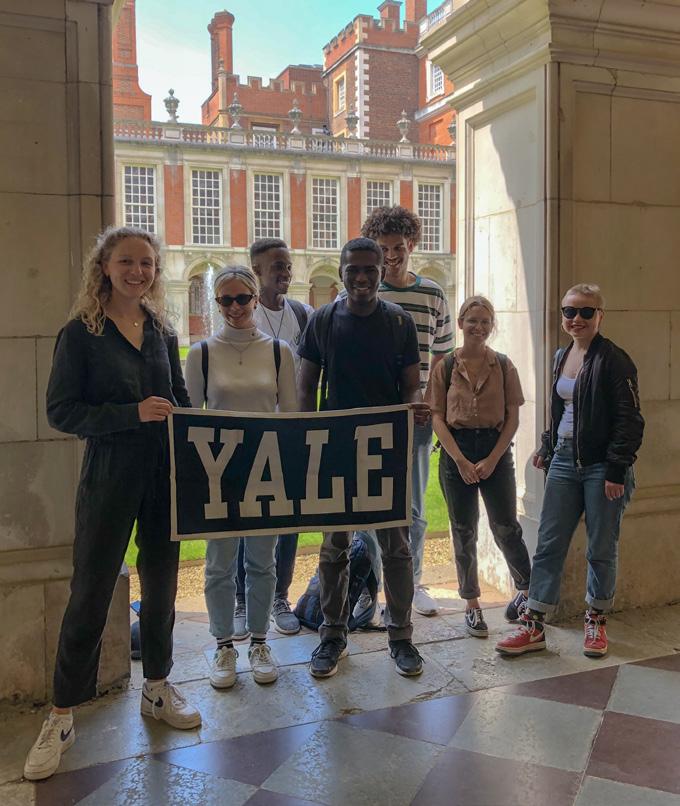
Yale in London
The 2019 summer term was covered in the annual report for 2018–2019.
Spring Term
13 January–24 April 2020
There were five students enrolled on the 2020 spring term. Three students were from Yale and two from Yale–NUS, Singapore. Students were housed in Porter’s Edge in Canada Water. The programme offered the following courses: ‘Queen Victoria and Royal Representations’ and ‘Virginia Woolf’s London’ by Margaret Homans (Yale University), ‘Modern British Theatre’ by Mark Wheatley (freelance), and ‘The Golden Age of British Painting’ by Mark Hallett (PMC).
Due to the Covid-19 pandemic and subsequent lockdowns across most of the world, students and US faculty were asked to return to their home countries in the tenth week of the programme. Spring break was extended by an additional week (Yale in London spring break is ordinarily one week, unlike in New Haven) in order to allow faculty and administrators to plan the transition to online teaching and scheduling across five different time zones. Courses resumed in the eleventh week of term and teaching continued via Zoom. The programme was unable to replicate visits to sites and the theatre; however, digitised museum and gallery collections and online offerings from theatres were used in lieu of in-person learning experiences in London. Final examinations for all of the courses consisted of end-of-term papers and written responses, and therefore required no adjustments. The summer sessions were cancelled due to the pandemic.
33 Paul Mellon Centre Annual Report 2019–2020
Yale in London, Session 2, 2019 students at Hampton Court Palace, London
Learning Programme
Graduate Summer School
In July 2019, the Centre launched a new programme, the Graduate Summer School, in partnership with the Yale School of Art, Yale Department of the History of Art and the Yale Center for British Art. Each year the Graduate Summer School aims to partner with a London-based organisation, and in 2019 this was the Institute of Contemporary Arts (ICA). The aim of the twelve-day programme is to bridge the gap between graduate students studying fine arts and the history of art in the US and the UK. By bringing these two groups together, we hope to create an opportunity for students to engage in dialogue with one another and to explore key issues affecting both fields.
In 2019, the theme of the Graduate Summer School was ‘Artist Collectives’. The convenors were Ayham Ghraowi from the Yale School of Art, Richard Birkett from the ICA and Mark Hallett from the Paul Mellon Centre. Together with Academic Coordinator Rosie Ram (Royal College of Art) they created a syllabus that included workshops by Collective Creativity, Artist Placement Group, Incidental Unit, and the Otolith Group; visits to the Women’s Art Library at Goldsmiths, Oxford University, and Flat Time House; and contributions by artists, academics and staff at the Paul Mellon Centre. As part of the programme students were grouped together in order to work towards a final creative output of their choosing that reflected the theme of the Summer School and the discussions generated over the two weeks.
Public Lecture Course
In autumn 2019, the Centre ran a five-week series titled Art and War. Convened by Mark Hallett and Jacqueline Riding, the lectures examined depictions of war in art from the late-sixteenth to the early-nineteenth centuries. In the spring, the Centre was due to run a series titled Ceramics in Britain, 1750 to Now. However, after the first lecture the series was postponed to autumn 2020 due to the national lockdown. In lieu of a spring series, the Centre took the unprecedented step of offering a summer Public Lecture Course entirely
34
online. In six 30-minute pre-recorded lectures, Mark Hallett and Martin Postle introduced audiences to seminal works of eighteenth-century British art, in a series titled Georgian Provocations
The online offering of the lecture course proved to be very successful, in large part due to the public’s increased appetite for cultural offerings over the summer and a sustained advertising campaign to promote the lectures.
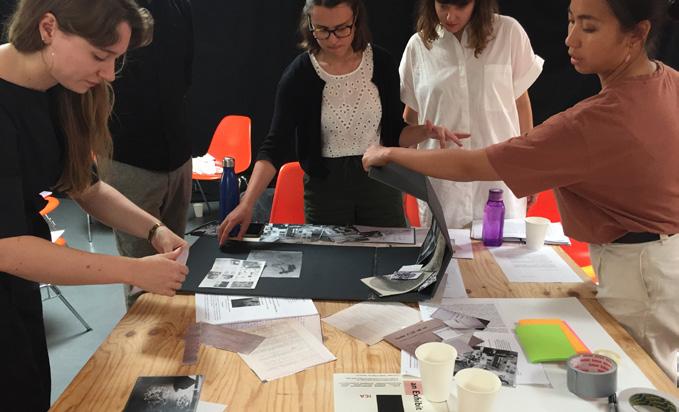
Networks
The Doctoral Researchers Network (DRN) and Early Career Researchers Network (ECRN) ran a combined total of eleven events over the year that looked to support members in their research and skills development. As with all other programming across the Centre, the networks’ events were successfully moved online in May. The convenors for the 2019–20 academic year were Judith Stapleton and Sean Ketteringham for the DRN and Emily Burns and Thomas Hughes for the ECRN. In spring 2020, the Centre’s Bryony Botwright-Rance took over responsibility as the staff liaison for the DRN and the ECRN. Her duties include supervising the networks, supporting the convenors and providing guidance with event programming.
35 Participants of the Graduate Summer School, July 2019
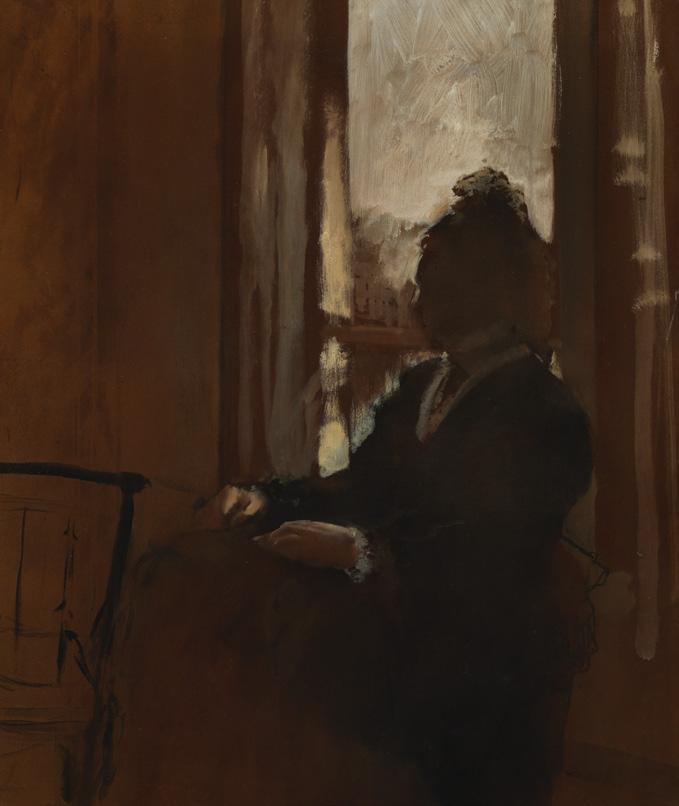
Write on Art
The third cycle of the Write on Art prize launched in autumn 2019 in partnership with Art UK. The judges for the 2019–20 cycle were broadcaster and historian Sir Simon Schama; art critic and Guardian contributor Hettie Judah; Director of the Scottish National Gallery of Modern Art Simon Groom; and the Young Adult novelist Karen Gregory. The deadline for the prize was extended to 31 July as a result of the uncertainty of schooling in the spring. As a result of the deadline extension and a targeted approach to marketing the prize during this cycle, Write on Art saw the number of submitted essays increase by 152 per cent. In addition, the shortlisting committee and judges noted a marked increase in the overall quality of the essays, making the shortlisting and judging process even more challenging than in previous years.
The winners of the 2019–20 cycle were:
In the Years 12/13 category:
First place: Florence Wolter, on Woman at a Window by Edgar Degas
Second place: Izzy Anjani, on Standing Figure with African Masks by Claudette Johnson
Runners Up: Iris Watson, on Yellow Islands by Jackson Pollock; Eleanor Harvey, on She’s a Leyland Lady, 1956 by Walter Lambert; Sasha Minnis, on Self-Portrait as Saint Catherine of Alexandria by Artemisia Gentileschi
In the Years 10/11 category:
First place: Ruby Langan-Hughes, on The Broken Mirror by Jean-Baptiste Greuze
Second place: Imogen Hodgkins, on Cottage and Figure I by Jack Simcock
Runners Up: Ore Gazit, on Jerusalem, Looking to Mount Scopus by David Bomberg; Alicia Doran, on International Klein Blue by Yves Klein; Dasha Shapovalova, on Interior Scene with Clive Bell and Duncan Grant
Drinking Wine by Vanessa Bell
37 Paul Mellon Centre Annual Report 2019–2020
Edgar Degas, Woman at a Window, 1871–1872, oil on paper, 61.3 x 45.9 cm. The Courtauld, London (Samuel Courtauld Trust). P.1932.SC.88
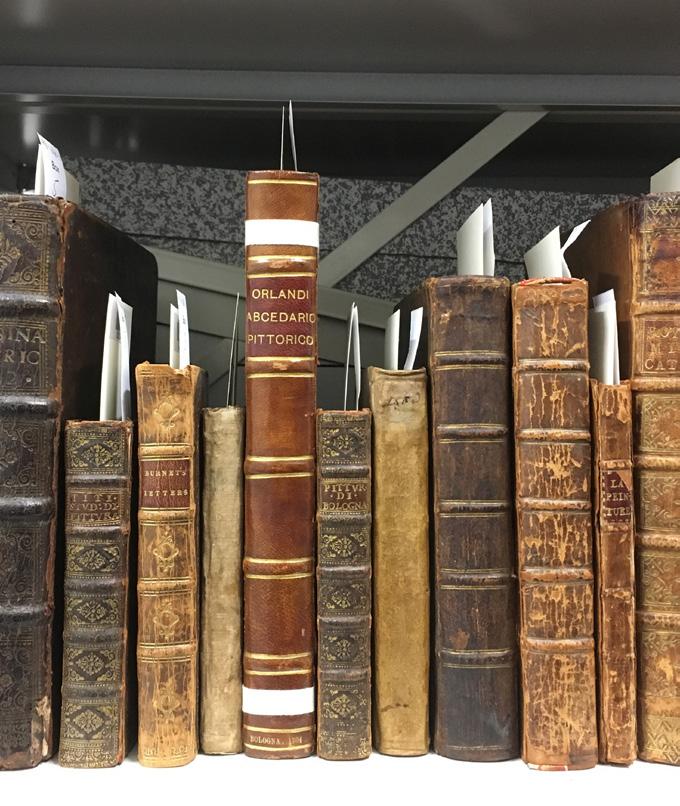
Archives and Library
For the first half of the year, Archives and Library staff were engaged with traditional professional activities such as acquisition, cataloguing and running a public service and outreach programme. Building the public service was a key emphasis after a period of closure for building work. The number of in-person visits to the Public Study Room was slightly up on the previous year; however, the number of new readers registered was almost double, indicating that the Archives and Library are appealing to wider audiences. Likewise, whilst visits to the Archives and Library pages on the Centre’s website remained at a steady level, visits to the PMC catalogue data exported to external websites (such as Archives HUB) increased by a third.
In March 2020, the Archives and Library closed to the public, along with the rest of the Centre, due to the coronavirus pandemic. During the closure, staff prioritised various archive and library cataloguing projects, such as cataloguing a collection of Leicester Galleries catalogues. Providing assistance to readers unable to consult the Centre’s material was also a key concern. Following the initial lockdown period, Archives and Library staff made scheduled visits to the Centre where – amongst other key things –they were able to carry out research and make digital copies of material for researchers. Staff ensured they liaised with other archives and libraries, as well as professional bodies, throughout this period, in order to keep up to date with relevant responses to coronavirus. This allowed staff to rework all our procedures so as to allow us to reopen to the public when safe to do so.
Photo Archive Project
Archives and Library staff played a significant role in the project to digitise the Centre’s Photographic Archive. They worked alongside the Digital Manager attending meetings of PHAROS (the International Photographic Archive consortium); taking a key role in addressing copyright, contractual and other permissions issues; and planning and hosting an International Copyright Workshop.
39 Paul Mellon Centre Annual Report 2019–2020 Early printed books from Paul Oppé's library, August 2019
Drawing Room Displays 2019–2020
There were only two Drawing Room Displays this year due to the closure of the Centre in March 2020. The first, curated by the Centre’s Sarah Victoria Turner, drew from the Peter and Renate Nahum donation and was accompanied by a Facebook Live Tour by Sarah in October 2019. The second, curated by Mark Hallett, drew on the Centre’s institutional archive. Bryony BotwrightRance was responsible for overseeing and coordinating both displays and their accompanying booklets: Modern Art and Publishing between 1935 and 1955: The Peter & Renate Nahum Gift (23 September 2019 to 17 January 2020) and Making the Catalogue Raisonné (3 February to 15 May 2020, and ongoing).
Staff
Anthony Day’s contract was extended for a nine-month period and during this time he completed cataloguing the professional papers of Paul Oppé. Comprising 35 boxes of material in total and including correspondence, photographs, journals, diaries and assorted research material, the resulting catalogue includes 581 detailed records. The descriptions were published online on the Centre’s website; Archives Hub; the National Archives’ Discovery catalogue; and Archives Portal Europe, in June 2020.
Lucy Kelsall was appointed as Oppé library cataloguer in July 2019. She completed the cataloguing of the Paul Oppé library collection, a total of well over 1,000 books, exhibition and auction catalogues and journals, dating from 1540 to the mid-twentieth century. Catalogue records for relevant titles were submitted to the English Short-Title Catalogue (ESTC). She also embarked on cataloguing the Brinsley Ford collection of eighteenth-century and later Grand Tour travel guides, donated to the Centre in 2017 by the collector’s family.
Archives and Library staff again took part in ‘History Day’ at Senate House. This one-day event held in November was a great success, introducing the Centre’s Research Collections and activities to new audiences.
In addition, staff continued to provide talks and tours of the research collections and Drawing Room Displays to a broad variety of audiences, to
40 Archives and Library
support both the wider activities of the Centre and the library and archive professional initiatives more generally. Activities supported included, but were not limited to, the Bedford Square Festival, Yale Graduate Summer School, the British Records Association AGM, and a second Art+Feminism Wikipedia Edit-a-thon.
Library
A total of 662 new books and exhibition catalogues were acquired and accessioned during the year.
As well as newly published books, exhibition catalogues, journals and auction catalogues acquired by purchase and gift throughout the year, the library received two major donated collections.
The Fleming-Wyfold Art Foundation generously offered its comprehensive library on Scottish art and artists to the Centre. A total of 250 books and exhibition catalogues were donated in February 2020.
Peter and Renate Nahum followed up previous donations of material with a collection of 420 exhibition catalogues from the Leicester Galleries. Dating from 1906 to 1977, this amounts to a third of the total exhibition output published by this important London gallery.
In addition, a set of Master Drawings journals was donated by the Athenaeum Library in September 2019, and in October the Wilson Centre for Photography again donated a number of books on photography.
Two previously received donations were accessioned and fully catalogued during the year: the Paul Oppé library (1,194 items) and the Brinsley Ford Grand Tour library (188 items). The Peter and Renate Nahum Leicester Galleries collection (422 items) was also catalogued. Catalogues of the Paul Oppé (professional papers) and Brian Sewell Archives were also completed and the resulting descriptions published online.
41 Paul Mellon Centre Annual Report 2019–2020
Archive
Six archive collections were offered to the Centre from private donors during the year. Following careful assessment against the Centre’s published Archive Collections Statement policy and, in some cases, an on-site appraisal, four were declined. One collection was secured for the Centre as a bequest, while the other, the Humphrey Waterfield Archive, was kindly donated by William Waterfield and Judith Pillsbury.
Humphrey Waterfield (1908–1971), a trained artist, was also an accomplished gardener, developing his skills initially at Hill Pasture in Broxted, Essex – the garden he began to construct in 1936 – and subsequently at the Clos du Peyronnet in Menton-Garavan on the Côte d’Azur. His papers comprise diaries, letters and sketchbooks. The items complement material in the Giles Waterfield Archive acquired by the Centre in 2017.
Cataloguing of the Frank Simpson Archive was completed, and the resulting descriptions published online on the Centre’s website; Archives Hub; the National Archives’ Discovery catalogue; and Archives Portal Europe, in June 2020.
Institutional Archive
Archive staff continued the institution-wide records audit begun in 2018. Working with relevant staff across the Centre, they reviewed record-keeping practices relating to both HR and the Director’s activities. Record-keeping tools were updated, and records were destroyed or transferred to the Archive in accordance with best practice.
Archive staff also began training in the implementation of Preservica, a system designed to assist with the challenges of preserving electronic records, but it was difficult to continue this in a remote environment and therefore the initiative has been postponed until 2021.
42 Archives and Library
GDPR
The Archivist & Records & Data Protection Manager continued to undertake a thorough review of the personal information managed by the Centre. Working with relevant staff, GDPR practices in relation to various Centre initiatives –including the Write on Art, Country House and Photo Archive projects – were reviewed and practices updated to ensure compliance with the legislation. In addition, GDPR-related queries and issues arising from everyday working practices across the Centre were addressed. An initiative to review and streamline how contact information is collected, held and managed across the Centre was begun, but it was difficult to continue this in a remote environment and therefore this initiative has been postponed until 2021.
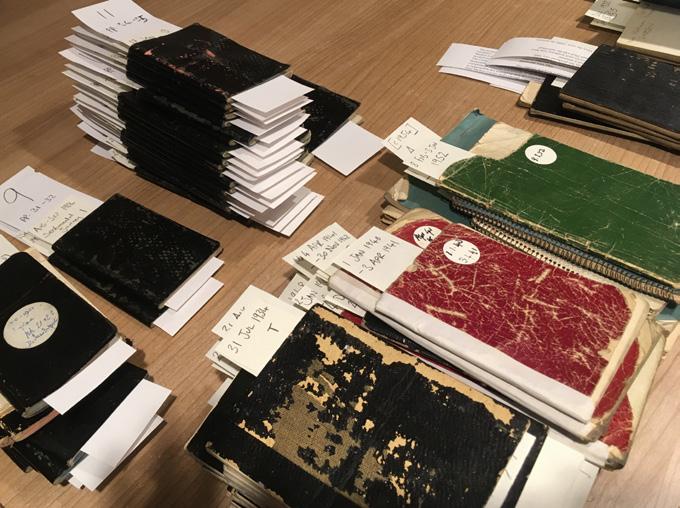
43 Paul Oppé's black books, pre-cataloguing, 2019
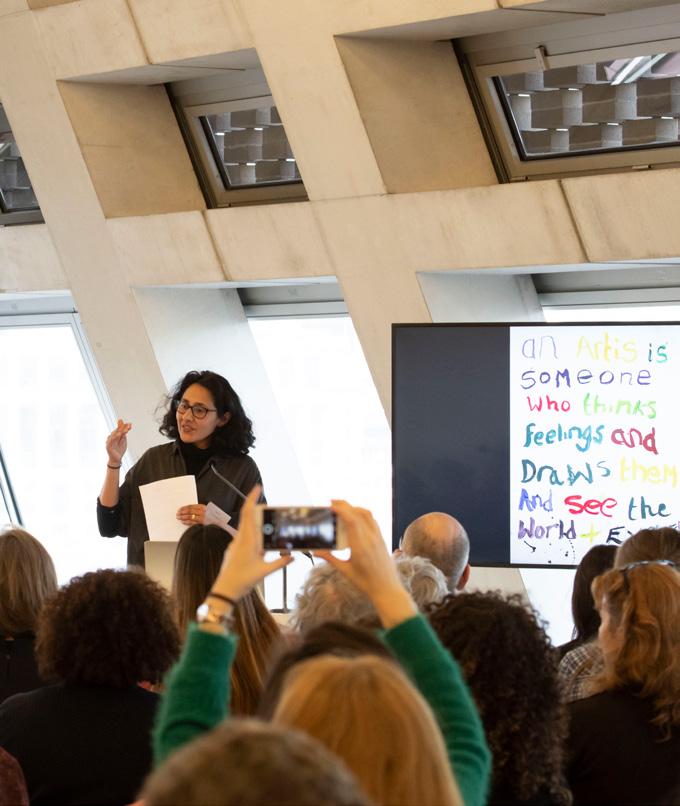
British Art Network
The British Art Network (BAN) is one of a series of Subject Specialist Networks inaugurated in 2012 by Arts Council England. The aim of the British Art Network is to facilitate the sharing of expertise, research and ideas across museums, galleries and academic institutions in the UK. In 2019, the PMC continued to provide financial support and resources to a relaunched British Art Network, in partnership with two other funders, Tate and Arts Council England. In addition to financial support, the PMC provided in-kind managerial support, including the continuation of Martin Postle in the role of BAN’s interim convenor, working closely with Jessica Juckes, full-time coordinator for BAN, under the aegis of Tate, and with Freya Stannard, and latterly Julia Price, from Tate.
In the early autumn of 2019, a new round of BAN activities began, involving the Early Career Curators Group, the eleven sub-groups that explore specific areas of British art and the three seminar series organised by regional network members across the UK. A full list of BAN activities from September 2019 to June 2020 accompanies this report.
The principal challenge for the BAN team, the participants in the various strands of activity and the members, was the onset of the Covid-19 pandemic in the early spring of 2020, which forced the postponement of a number of major initiatives. These included two conferences, which were due to have been hosted in March 2020 by National Museum Wales, Cardiff, and in June 2020, co-hosted by Tate Britain and the National Gallery, London. A positive outcome, however, was the transfer of many activities to online forums, owing to the enterprise, energy and selfless dedication of so many individuals.
In addition to BAN activities, future strategy was evolved and discussed through meetings of the BAN steering committee, which met in the autumn of 2019 and spring of 2020, chaired by Alex Farquharson, Director of Tate Britain, and the PMC’s Director of Studies, Mark Hallett. Aided by regular email shots, communication with BAN members was also facilitated through the online publication of a revamped newsletter, issued on a quarterly basis.
45 Paul Mellon Centre Annual Report 2019–2020
Contemporary Public Art in the Urban Landscape, joint British Art Network and Contemporary Art Society seminar, Tate Exchange, February 2020. Photo © Tate (Oliver Cowley)
BAN membership rose from 592 to 826 during the period covered by this report – an increase of 28 per cent. Of the total BAN membership, more than 350 members signed up to at least one sub-group. Attendance for events via the online platform Zoom was in general far higher than it would have been had they taken place in person. Attendance for the ‘Imperial Subjects’ seminar was particularly impressive, with an average of 130 people per online event.
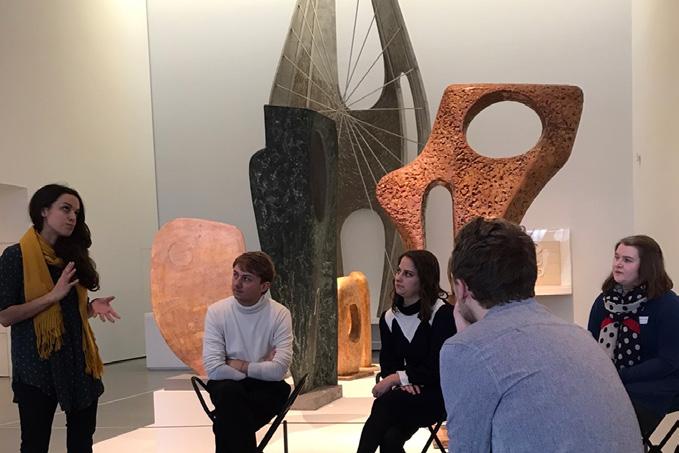
46
Early Career Curators Group members at The Hepworth Wakefield, December 2019.
Photo courtesy of Jessica Juckes
British Art Network July 2019–June 2020
British Art Network Sub-Group Events
25 September 2019 ‘British Mural Painting’, University of Cambridge
15 October 2019 ‘British Landscapes’, Bristol Museum and Art Gallery
1 November 2019 ‘British Drawings’, Windsor Castle
6 November 2019 ‘Post-War Painting in Regional Collections’, Walker Art Gallery, National Museums Liverpool
7 November 2019 ‘Contemporary Art in Scotland’, University of St Andrews
7 November 2019 ‘Queer British Art’, Walker Art Gallery, National Museums Liverpool
13 January 2020 ‘British Landscapes’, Royal Academy of Arts
31 January 2020 ‘Black British Art’, Royal West of England Academy, Bristol
20 February 2020 ‘Post-War Painting in Regional Collections’, Birmingham and Midlands Institute
5 March 2020 ‘British Drawings’, Scottish National Gallery of Modern Art
6 March 2020 ‘Group Work: Contemporary Art and Feminism’, Women’s Art Library, Goldsmiths
11 March 2020 ‘British Genre and Narrative Painting’, Wolverhampton Art Gallery
10 & 11 June 2020 ‘Queer British Art’, online via Zoom
25 June 2020 ‘British Landscapes’, online via Zoom
26 June 2020 ‘Group Work: Contemporary Art and Feminism’, online via Zoom
Early Career Curators Group
18 September 2019 ‘What is “British Art”? Diversifying Notions of British Art Curatorship’, CPD session, Paul Mellon Centre for Studies in British Art
9 & 10 December 2019 ‘Confidence, Risk and Failure Seminar Planning Workshop’, CPD session and workshop, The Hepworth Wakefield
28 March 2020 ‘Curating Online Seminar Planning Workshop’, CPD session and workshop, online via Zoom
British Art Network Seminar Series
January–February 2020
Art Science Nature
Seminar series organised by BAN bursary awardees Colchester and Ipswich Museums, and held at Ipswich Museum, Ipswich Art Gallery and Firstsite, Colchester.
16 January ‘The Foundation of Art and Science’
24 January ‘Drawing on Life: Natural History Illustration’
24 February ‘The Art of Taxidermy’
7 February 2020
Contemporary Public Art in the Urban Landscape
Seminar organised by the British Art Network and the Contemporary Art Society, and held at Tate Exchange, Tate Modern.
May 2020
Imperial Subjects: (Post)colonial Conversations between South Asia and Wales
Seminar series organised by BAN bursary awardee, the Glynn Vivian Art Gallery, and held online via Zoom.
12 May ‘Exploring Colonial Conversations’
14 May ‘Miniatures and the West’
19 May ‘Robert Clive: Collections and Gifts’
21 May ‘Cultural Interactions’
47 Paul Mellon Centre Annual Report 2019–2020
Special Projects
London, Asia
The London, Asia research project is co-led by the Paul Mellon Centre’s Deputy Director for Research, Sarah Victoria Turner, and Senior Research Fellow Hammad Nasar. By convening workshops, talks and conferences along three research strands – exhibitions, institutions and art schools – the London, Asia research project is working towards a more expanded and diverse narrative of British art.
It was established in collaboration with Asia Art Archive, Hong Kong, in 2016, and after the successful completion of phase one of the project in June 2019, the project was awarded a further two years of funding by the Board of Governors to support a second phase of activity until June 2021.
September 2019 saw the launch of a special thirteenth issue of British Art Studies, ‘London, Asia, Exhibitions, Histories’, co-edited by Nasar and Turner, as the first publication to emerge from the London, Asia project. It explores the exhibition as a site for researching the entanglements between London and Asia, and deploys British Art Studies as a digital platform for collaboration. It included a set of new commissions from the Asia Art Activism collective, and made rare primary documents available to the research community.
During 2019–20, a major focus of the London, Asia project has been a series of forums organised in collaboration with the Slade School of Fine Art, as part of the ongoing research project exploring modernism as a ‘transversal phenomenon’ by Professor Ming Tiampo (Carleton University, Ottawa), London, Asia’s second research award holder. Engaging educators, curators, archivists and several generations of Slade alumni, these workshops have explored the Slade as a site of transnational encounter. A new strand of the project, exploring the Slade’s institutional and pedagogical networks, is being developed with the National College of Arts, Lahore, for 2020–21.
48
Nicholas Tee performing Yellow Peril at Manchester Art Gallery, 6 March 2019. Part of Asia, Art, Activism’s cover collaboration for British Art Studies, Issue 13, ‘London, Asia, Exhibitions, Histories’, September 2019
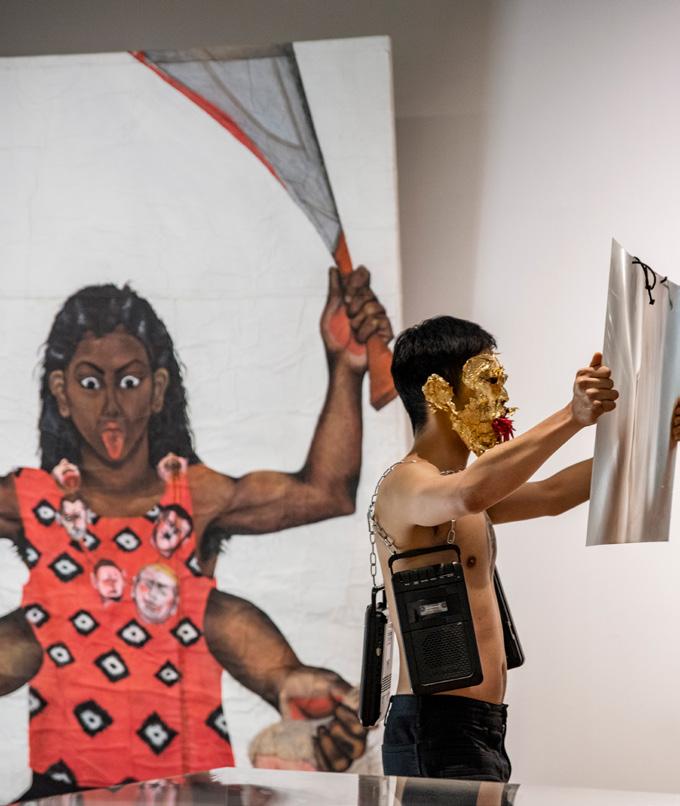
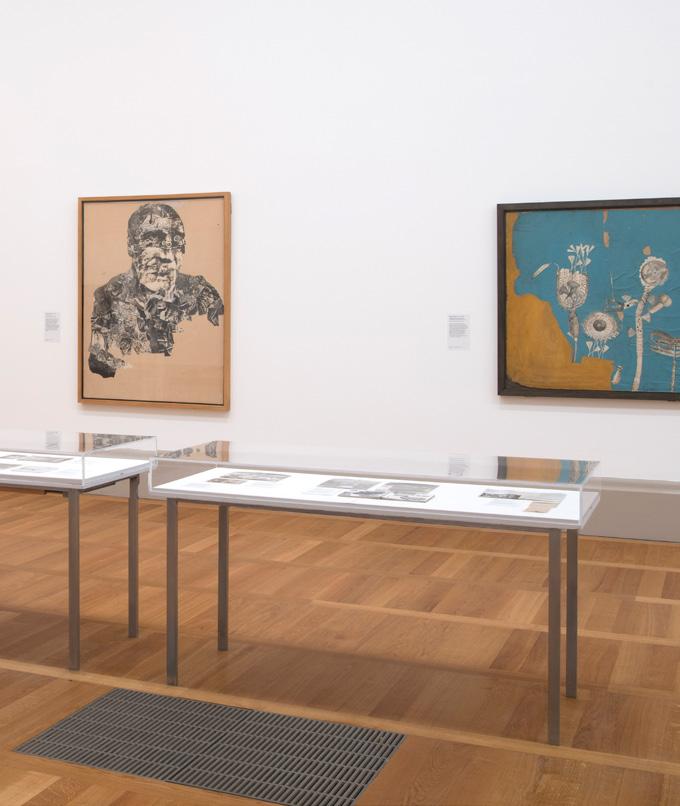 Installation photograph, Vital Fragments: Nigel Henderson and the Art of Collage, Spotlight Display at Tate Britain, London, 2 December 2019–13 March 2020. Photograph © Tate (Oliver Cowling)
Installation photograph, Vital Fragments: Nigel Henderson and the Art of Collage, Spotlight Display at Tate Britain, London, 2 December 2019–13 March 2020. Photograph © Tate (Oliver Cowling)
Vital Fragments: Nigel Henderson and the Art of Collage
The artist Nigel Henderson (1917–1985) pursued a creative career that spanned fine art, photography, exhibition-making and interior design initiatives. This research project, which was led by the Centre’s Director of Studies, Mark Hallett, and Rosie Ram (Royal College of Art), and developed in collaboration with Tate Britain’s Elena Crippa and Zuzana Flašková, examined the collage practice that underpinned Henderson’s thinking.
Henderson’s experimental collages combine printed matter, paint and photography. In his collage work, he assembled fragments of image and text in order to activate them in new ways. He wrote: ‘I want to release an energy of image from trivial data. I feel happiest among discarded things, vituperative fragments cast casually from life, with the fizz of vitality still about them.’ His works bring the visual detritus of modern British life into dialogue with imagery from other places and periods. They reflect on the passing of time, the ruins of war and the crumbling of empires. Henderson’s collages also engage with the historical legacies of collage as a practice, with the rough textures of brutalism and with the bold graphics of pop art. More broadly, they engage with the visual culture of their own time and cast a critical eye across contemporary images intended to stimulate aspiration, consumption and desire.
This research project generated a Spotlight Display at Tate Britain titled Vital Fragments: Nigel Henderson and the Art of Collage (December 2019 to March 2020). It also led to the publication of an accompanying guide to the artist’s collages, which is available to read on the Centre’s web pages. In a pioneering initiative for the Centre, it also resulted in the production of twelve short films devoted to one of Henderson’s most ambitious works, Screen (1949–52 and 1969). These films, which were featured in the Tate Britain display, were created by Hallett, Ram and Jonathan Law, Research Fellow and Filmmaker at the Centre. The research project also incorporated plans for a major international conference and workshop on collage in twentieth-century Britain, which was due to take place at Tate Britain in March 2020. This had to be postponed because of the coronavirus pandemic; however, a follow-up event is planned for 2021.
51 Paul Mellon Centre Annual Report 2019–2020
Art and the Country House
The Paul Mellon Centre research project, Art and the Country House, headed by Dr Martin Postle as project leader and commissioning editor, continued to focus on the collection and display of works of art in the country house in Britain from the sixteenth century to the present day. The eight houses selected as case studies are: Castle Howard, Yorkshire; Doddington Hall, Lincolnshire; Mells Manor, Somerset; Mount Stuart, Isle of Bute; Petworth House, West Sussex; Raynham Hall, Norfolk; Trewithen, Cornwall; and West Wycombe, Buckinghamshire.
Dr Postle continued to commission and edit contributions for the project, including new material relating to Mells Manor. Several visits were made to Mells by the research team, to inspect works of art and archives. Further visits were made to Petworth House, and essays were commissioned from the Earl of Egremont, on his early memories of Petworth, and Alec Cobbe, on his rehanging of the collection in the 1980s and ‘90s. Further photography was taken at a number of houses involved in the project, and Jonathan Law, Research Fellow and Filmmaker at the Paul Mellon Centre, continued to make progress on the films commissioned especially for the project.
From the summer of 2019 the first batch of research material was migrated onto the online platform for the project created by Keepthinking, and managed by Alice Read, Digital Producer at the Paul Mellon Centre. Aside from Dr Postle and Alice Read, the delivery team for the project consisted of the Centre’s Picture Researcher, Maisoon Rehani, together with the PMC’s Editor Emily Lees and Research Assistant Freddie Pegram.
The project is due to be completed and launched online by the Paul Mellon Centre in November 2020.
52
Special Projects
Dining Room, Mells Manor, Somerset. Digital Image courtesy of Rodolfo Rodriguez (all rights reserved)
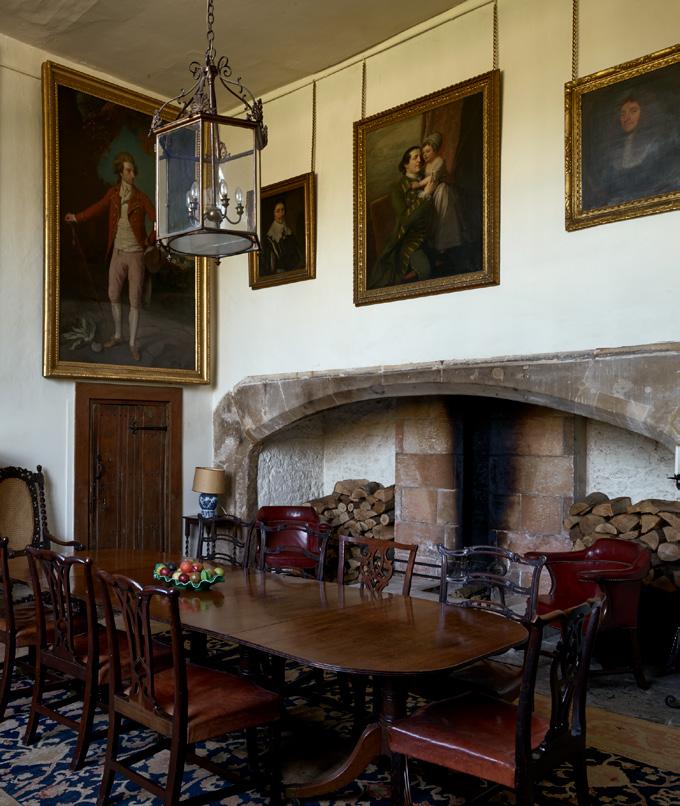
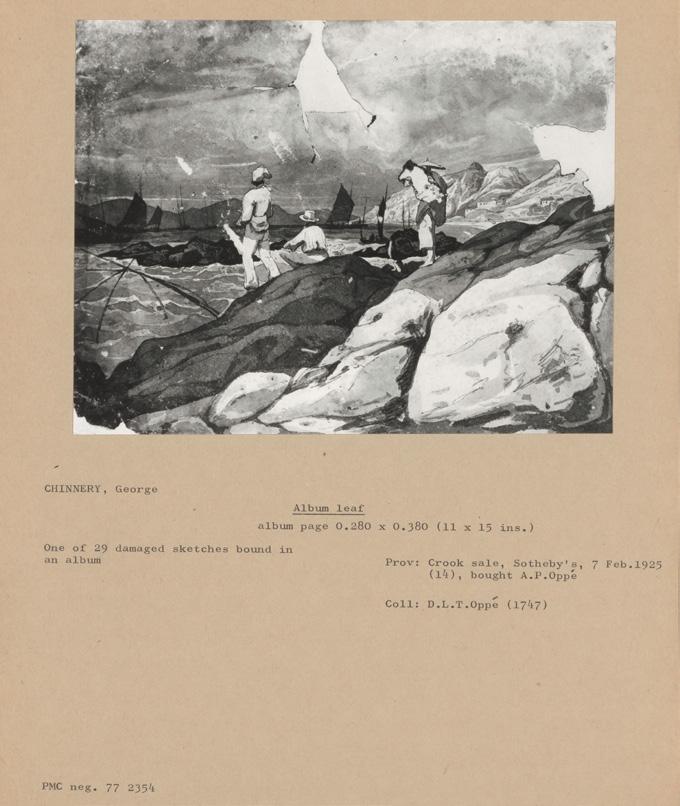 George Chinnery, sketchbook page, between 1825 and 1852. Paul Mellon Centre Photographic Archive, PA-F06488-0061
George Chinnery, sketchbook page, between 1825 and 1852. Paul Mellon Centre Photographic Archive, PA-F06488-0061
Photographic Archive
Having scanned the Centre’s Photographic Archive in 2019, work was undertaken to document and catalogue the collection to prepare it for publication. Access to the digital facsimiles has been provided to researchers on request.
Responding to focus group feedback, the collection was transcribed in its entirety to allow for it to be searchable to a more granular level than initially planned. A contractor transcribed annotated data from the mounts into a structured format that could be imported into a database procured and developed during this period. The database was constructed to enable data sharing in formats common to aggregator platforms such as Archives Hub, Yale’s digital collections portal, and the PHAROS consortium’s forthcoming platform. An article published in 2020 by the Centre’s Sarah Victoria Turner and Tom Scutt in the Art Libraries Journal (‘A “collection of broken dreams”? Making the Paul Mellon Centre’s Photo Archive Accessible in 2019 and Beyond’) discusses this process and the plans we have for the PMC’s digital collection platform. Publication was pushed back at the start of the pandemic to allow other projects to take priority, and it will now be released in 2021. This enabled us to establish the rights of photographers and owners of works of art represented in the collection, and to develop a strategy for transposing permissions received for the hard-copy images into their new digital formats.
The PMC’s Charlotte Brunskill and Tom Scutt worked with other members of the PHAROS consortium to develop a workshop considering intellectual property in the international context. Supported by a Samuel H. Kress Foundation grant, the workshop brought together legal and cultural heritage experts and stakeholders from the UK, EU and the US to discuss cross-border copyright challenges and their resolution in the context of a common digital platform for the PHAROS consortium, and was hosted at the PMC on 3–4 March 2020. A report on the proceedings and outcomes, International Copyright Workshop: Providing Online Access to Art Historical Research Photography Collections, has subsequently been published.
55 Paul Mellon Centre Annual Report 2019–2020
Staff Activities
Mark Hallett Director of Studies
Mark Hallett’s main research focus for the year was the Tate Britain Spotlight display, Vital Fragments: Nigel Henderson and the Art of Collage, which he co-curated, and which opened in December 2019 and ran through to March 2020, when it closed prematurely because of the Covid-19 pandemic. The details of the display, the result of a collaborative research project between the PMC and Tate Britain, are given elsewhere in this report.
The Director of Studies also gave the British Academy’s ‘Aspects of Art’ lecture for 2019. This lecture series, which has been running since 1916, focuses on topics in the fields of music and the history of art. Professor Hallett’s lecture, which was subsequently published in the Academy’s journal, was titled ‘The Newspaper Man: Michael Andrews and the Art of Painted Collage’.
This year also saw Professor Hallett being invited to curate a major Tate Britain exhibition on the artists John Constable and J. M. W. Turner, which is due to be held in 2025/26 to commemorate the 250th anniversary of the births of the two painters.
In spring 2020, Professor Hallett taught a course on eighteenth-century British art for the Centre’s Yale in London programme. With the onset of lockdown in March 2020, he and his colleague Martin Postle delivered a series of recorded online talks entitled Georgian Provocations, as part of the Centre’s Public Lecture Course programme.
Professor Hallett continued to serve as an external member of Tate Britain’s Advisory Council, and of the Courtauld Institute of Art’s Promotion Committee.
56
Sarah Victoria Turner Deputy Director for Research
Sarah Victoria Turner’s major project this year was the Sculpting Lives podcast. Together with co-host Jo Baring (Director of the Ingram Collection), Dr Turner researched and presented five episodes, each exploring the career of a different female sculptor. The podcast garnered national press interest, being mentioned as the Guardian’s art podcast of the week. A second series is now in the planning stages.
Dr Turner was invited to join the advisory board of the Warburg Institute, part of the School of Advanced Study at the University of London. She is looking forward to building even stronger connections with this important institution and learning from fellow board members, who include the artist Isaac Julien, and the Director of the British Library.
Dr Turner has travelled widely to UK and international galleries, museums and academic institutions representing the work of the PMC and giving presentations on her own research. In September 2019 she went to the University of Malaga as an invited speaker at the Catalogs Reload symposium, to discuss the development and publication of the Centre’s The Royal Academy Summer Exhibition: A Chronicle, 1769–2018
Dr Turner has published two essays in this period. The first was a contribution to the catalogue accompanying the Kettle’s Yard exhibition on the contemporary artist Linder. The second, in which she writes about her research on the Theosophical Art Circle, which she began as a doctoral student under Christopher Green’s supervision at the Courtauld Institute of Art, is included in Of Modernism: Essays in Honour of Christopher Green (Chicago University Press, 2020).
Dr Turner went on parental leave in January 2020.
57 Paul Mellon Centre Annual Report 2019–2020
Martin Postle Deputy Director for Grants & Publications
Dr Postle’s research activities continued to be centred principally on the Art and the British Country House project. In 2019 he co-curated the exhibition George Stubbs: ‘all done from Nature’ held at the MK Gallery, Milton Keynes, and the Mauritshaus, The Hague. The exhibition presented the first significant overview of Stubbs’s work in Britain for more than thirty years, bringing together over eighty paintings, drawings and publications, from the National Gallery’s iconic Whistlejacket to pieces from private collections that have never been seen in public. A major theme of the exhibition was anatomy, and the show included forensic drawings by Stubbs of humans, horses, tigers and domestic fowl at different stages of dissection. This extraordinary coming together of art and science was set alongside the actual skeleton of the legendary racehorse Eclipse, which Stubbs depicted in several paintings that also featured in the exhibition.
He also contributed a chapter on British female fantasy portraiture to Fancy in Eighteenth-Century European Visual Culture (Oxford University Press, 2020). In December 2019, he attended a conference held in Rome on Cardinal Albani, supported by the Paul Mellon Centre.
Dr Postle continued his role as interim convenor of the British Art Network, and continued to serve on the following committees and boards: the UK government’s Reviewing Committee on the Export of Works of Art and Objects of Cultural Interest; International Advisory Board, The British Art Journal; Governor of Dr Johnson’s House; the Council of the Attingham Trust; and Trustee of the Catalogue Raisonné of Works by Philip de László.
58
Staff Activities
Installation photograph, George Stubbs; ‘all done from Nature’, exhibition at the MK Gallery, Milton Keynes, 2019–20. Digital Image courtesy of the MK Gallery (all rights reserved)

Appendix
Cumulative List of Publications since 1970 (SBA: Studies in British Art series)
Print Publications
1971
Ronald Paulson, Hogarth: His Life, Art, and Times, 2 vols.
John Hayes, The Drawings of Thomas Gainsborough (published for the PMC in USA only)
1972
John Hayes, Gainsborough as Printmaker (published for the PMC in USA only)
1973
Eric Adams, Francis Danby: Varieties of Poetic Landscape
1974
A. Charles Sewter, The Stained Glass of William Morris and His Circle, 2 vols.
1975
Leonée and Richard Ormond, Lord Leighton
Hans Hammelmann, Book Illustrators in Eighteenth-Century England
1976
M. H. Port, The Houses of Parliament
Edward Mead Johnson, Francis Cotes (Phaidon, published with the help of PMC)
Andrew Saint, Richard Norman Shaw
Miklos Rajnai and Mary Stevens, The Norwich Society of Artists, 1805–1833
1977
Nicholas Penny, Church Monuments in Romantic England
Robin Gibson, Catalogue of Portraits in the Collection of the Earl of Clarendon (privately published for PMC by BAS Printers Ltd)
Martin Butlin and Evelyn Joll, The Paintings of J. M. W. Turner (rev. edn 1984), 2 vols.
1978–84
K. Garlick and A. MacIntyre (eds.), The Diary of Joseph Farington, 16 vols.
1978
Peter Thornton, Seventeenth-Century Interior Decoration in England, France & Holland
1979
Anthony Quiney, John Loughborough Pearson
William Vaughan, German Romanticism and English Art
George P. Landow, William Holman Hunt and Typological Symbolism
1980
Kathryn Moore Heleniak, William Mulready
Andrew McLaren Young, Margaret MacDonald, Robin Spencer and Hamish Miles, The Paintings of James McNeill Whistler, 2 vols.
1981
William L. Pressly, The Life & Art of James Barry
John Ingamells, The English Episcopal Portrait, 1559–1835: A Catalogue (privately for PMC)
Mansfield Kirby Talley, Portrait Painting in England: Studies in the Technical Literature before 1700 (privately for PMC)
Martin Butlin, The Paintings and Drawings of William Blake, 2 vols.
Virginia Surtees (ed.), The Diary of Ford Madox Brown
1982
Hugh Brigstocke, William Buchanan and the 19th-Century Art Trade (privately for PMC)
Benedict Read, Victorian Sculpture
1983
Susan Beattie, The New Sculpture
Louise Lippincott, Selling Art in Georgian London: The Rise of Arthur Pond
1984
Graham Reynolds, The Later Paintings and Drawings of John Constable, 2 vols.
Terry Friedman, James Gibbs
1985
Richard Dorment, Alfred Gilbert
Rüdiger Joppien and Bernard Smith, The Art of Captain Cook’s Voyages, 4 vols.
1987
Cecily Langdale, Gwen John
Michael McCarthy, The Origins of the Gothic Revival
Cecilia Powell, Turner in the South: Rome, Florence, Naples
1988
Felicity Owen and David Blayney Brown, Collector of Genius: A Life of Sir George Beaumont
Stephen Deuchar, Sporting Art in Eighteenth-Century England: A Social and Political History
60
Bernard Smith and Alwyne Wheeler (eds.), The Art of the First Fleet & Other Early Australian Drawings
Iain Pears, The Discovery of Painting: The Growth of Interest in the Arts in England, 1680–1768
1989
Clive Wainwright, The Romantic Interior: The British Collector at Home, 1750–1850
1991
Christopher Gilbert, English Vernacular Furniture, 1750–1900
1992
Alastair Smart, Allan Ramsay: Painter, Essayist and Man of the Enlightenment
1993
David H. Solkin, Painting for Money: The Visual Arts and the Public Sphere in Eighteenth-Century England
Douglas D. C. Chambers, The Planters of the English Landscape Garden
David Bindman and Gottfried Riemann (eds.), Karl Friedrich Schinkel, The English Journey: Journal of a Visit to France and Britain in 1826
Simon Thurley, The Royal Palaces of Tudor England: Architecture and Court Life, 1460–1547
Marcia Pointon, Hanging the Head: Portraiture and Social Formation in Eighteenth-Century England
1994
Sam Smiles, The Image of Antiquity: Ancient Britain and the Romantic Imagination
Charles Harrison, English Art and Modernism, 1900–1939
John Schofield, Medieval London Houses
Nigel Everett, The Tory View of Landscape
Miles Glendinning and Stefan Muthesius, Tower Block: Modern Public Housing in England, Scotland, Wales and Northern Ireland
1995
Howard Colvin, A Biographical Dictionary of British Architects, 1600–1840 (3rd edn.)
David Bindman and Malcolm Baker, Roubiliac and the Eighteenth-Century Monument: Sculpture as Theatre
Brian Allen (ed.), Towards a Modern Art World: Studies in British Art 1 (SBA 1)
Lucy Gent (ed.), Albion’s Classicism: The Visual Arts in Britain, 1550–1660 (SBA 2)
Jules Lubbock, The Tyranny of Taste: The Politics of Architecture and Design in Britain, 1550–1960
M. H. Port, Imperial London: Civil Government Building in London, 1851–1915
Giles Worsley, Classical Architecture in Britain: The Heroic Age
Paul Binski, Westminster Abbey and the Plantagenets: Kingship and the Representation of Power, 1200–1400
Margaret F. MacDonald, James McNeill Whistler, Drawings, Pastels and Watercolours: A Catalogue Raisonné
1996
Chloe Chard and Helen Langdon (eds.), Transports: Travel, Pleasure, and Imaginative Geography, 1600–1830 (SBA 3)
Diana Donald, The Age of Caricature: Satirical Prints in the Reign of George III
Graham Reynolds, The Early Paintings and Drawings of John Constable, 2 vols.
Ian C. Bristow, Interior House-Painting Colours and Technology, 1615–1840
Ian C. Bristow, Architectural Colour in British Interiors, 1615–1840
Charlotte Klonk, Science and the Perception of Nature: British Landscape Art in the Late Eighteenth and Early Nineteenth Centuries
Brian T. Allen and Larissa Dukelskaya (eds.), British Art Treasures from Russian Imperial Collections in the Hermitage
1997
John Ingamells (ed.), A Dictionary of British and Irish Travellers in Italy, 1701–1800, compiled from the Brinsley Ford Archive
Anthony Wells-Cole, Art and Decoration in Elizabethan and Jacobean
England: The Influence of Continental Prints, 1558–1625
Kay Dian Kriz, The Idea of the English Landscape Painter: Genius as Alibi in the Early Nineteenth Century
Timothy Clayton, The English Print, 1688–1802
Jeffrey M. Muller and Jim Murrell (eds.), Edward Norgate: Miniatura or the Art of Limning
Ronald Paulson (ed.), William Hogarth: The Analysis of Beauty
Robert R. Wark (ed.), Discourses on Art: Sir Joshua Reynolds
Deborah Frizzell, Humphrey Spender’s Humanist Landscapes: Photo Documents, 1932–1942
Michael Rosenthal, Christiana Payne and Scott Wilcox (eds.), Prospects for the Nation: Recent Essays in British Landscape, 1750–1880 (SBA 4)
1998
Richard Ormond and Elaine Kilmurray, John Singer Sargent: The Early Portraits; The Complete Paintings, Vol. I
Evelyn Newby, The Diary of Joseph Farington: Index
Margaret Garlake, New Art New World: British Art in Postwar Society
James Ayres, Building the Georgian City
61 Paul Mellon Centre Annual Report 2019–2020
Tim Barringer and Elizabeth Prettejohn (eds.), Frederic Leighton: Antiquity, Renaissance, Modernity (SBA 5)
1999
Ellen D’Oench, Copper into Gold: Prints by John Raphael Smith (1751–1812)
Mark Hallett, The Spectacle of Difference: Graphic Satire in the Age of Hogarth
Howard Colvin, Essays in English Architectural History
Michael Rosenthal, The Art of Thomas Gainsborough
Katharine Lochnan (ed.), Seductive Surfaces: The Art of Tissot (SBA 6)
Stephen Daniels, Humphry Repton: Landscape Gardening and the Geography of Georgian England
Nicholas Cooper, Houses of the Gentry, 1480–1680
Alastair Smart, ed. John Ingamells, Allan Ramsay: A Complete Catalogue of his Paintings
2000
Peter Fergusson and Stuart Harrison, Rievaulx Abbey
Ann Bermingham, Learning to Draw: Studies in the Cultural History of a Polite and Useful Art
Lisa Tickner, Modern Life & Modern Subjects: British Art in the Early Twentieth Century
John Summerson, Inigo Jones (rev. edn.)
Ruth Bromberg, Walter Sickert Prints
Paul Edwards, Wyndham Lewis: Painter and Writer
Roy Strong, The Artist and the Garden
Chris Brooks, The Albert Memorial: The Prince Consort National Memorial; its History, Contexts and Conservation
Carol Gibson Wood, Jonathan Richardson: Art Theorist of the English Enlightenment
David Mannings and Martin Postle, Sir Joshua Reynolds: A Complete Catalogue of his Paintings, 2 vols.
John Ingamells and John Edgcumbe (eds.), The Letters of Sir Joshua Reynolds
John Hayes (ed.), The Letters of Thomas Gainsborough
Alastair Grieve, Whistler’s Venice
Christine Stevenson, Medicine and Magnificence: British Hospital and Asylum Architecture, 1660–1815
2001
Stefan Muthesius, The Postwar University: Utopianist Campus and College
John Bold, Greenwich: An Architectural History of the Royal Hospital for Seamen and the Queen’s House
Todd Longstaffe-Gowan, The London Town Garden, 1700–1840
Allen Staley, The Pre-Raphaelite Landscape (2nd edn.)
G. E. Bentley, The Stranger from Paradise: A Biography of William Blake
Eileen Harris, The Genius of Robert Adam: His Interiors
Edward McParland, Public Architecture in Ireland, 1680–1760
James Hyman, The Battle for Realism: Figurative Art in Britain During the Cold War, 1945–60
David Solkin (ed.), Art on the Line: The Royal Academy Exhibitions at Somerset House, 1780–1836
Debra Mancoff (ed.), John Everett Millais: Beyond the Pre-Raphaelite Brotherhood (SBA 7)
Pauline Croft (ed.), Patronage, Culture and Power: The Early Cecils, 1558–1612 (SBA 8)
2002
Alex Kidson (ed.), Those Delightful Regions of Imagination: Essays on George Romney (SBA 9)
David Peters Corbett, Ysanne Holt and Fiona Russell (eds.), The Geographies of Englishness: Landscape and the National Past, 1880–1940 (SBA 10)
Sara Stevenson, The Personal Art of David Octavius Hill
Anne Crookshank and the Knight of Glin, Ireland’s Painters, 1600–1940
Larissa Dukelskaya and Andrew Moore (eds.), A Capital Collection: Houghton Hall and the Hermitage, with a Modern Edition of Aedes Walpolianae
Michael J. K. Walsh, C. R. W. Nevinson: This Cult of Violence
Susan Sloman, Gainsborough in Bath
Richard Ormond and Elaine Kilmurray, John Singer Sargent: Portraits of the 1890s; The Complete Paintings, Vol. II
Vaughan Hart, Nicholas Hawksmoor: Rebuilding Ancient Wonders
2003
Emmanuel Cooper, Bernard Leach: Life & Work
Colum Hourihane, Gothic Art in Ireland, 1169–1550
Jonathan Scott, The Pleasures of Antiquity: British Collectors of Greece and Rome
John Summerson, ed. Howard Colvin, Georgian London
Robyn Asleson (ed.), Notorious Muse: The Actress in British Art and Culture, 1776–1812 (SBA 11)
Edward Chaney (ed.), The Evolution of English Collecting: The Reception of Italian Art in the Tudor and Stuart Periods (SBA 12)
Kathryn A. Morrison, English Shops and Shopping: An Architectural History
62 Appendix
Simon Thurley, Hampton Court: A Social and Architectural History
2004
Richard Ormond and Elaine Kilmurray, John Singer Sargent: The Later Portraits; The Complete Paintings: Vol. III
Anthony Quiney, Town Houses of Medieval Britain
G. E. Bentley, Jr, Blake Records (2nd edn.)
Peter Guillery, The Small House in Eighteenth-Century London
Bruce Laughton, William Coldstream
Susan J. Barnes, Nora De Poorter, Oliver Millar and Horst Vey, Van Dyck: A Complete Catalogue of the Paintings
Sanford Schwartz, William Nicholson
David J. Getsy, Body Doubles: Sculpture in Britain, 1877–1905
Sue Malvern, Modern Art, Britain and the Great War
Fiona Donovan, Rubens and England
Veronica Franklin Gould, G. F. Watts: The Last Great Victorian
Julian Holder and Steven Parissien (eds.), The Architecture of British Transport in the Twentieth Century (SBA 13)
Giles Worsley, The British Stable: An Architectural and Social History
Paul Binski, Becket’s Crown: Art and Imagination in Gothic England, 1170–1300
John Cornforth, Early Georgian Interiors
Tim Barringer, Men at Work: Art and Labour in Victorian Britain
Susan Foister, Holbein and England
Alastair Grieve, Constructed Abstract Art in England: A Neglected Avant-Garde
Paula Henderson, The Tudor House and Garden: Architecture and Landscape in the Sixteenth and Early Seventeenth Centuries
Martin Hammer, Bacon and Sutherland: Patterns of Affinity in British Culture of the 1940s
2005
Chris Miele (ed.), From William Morris: Building Conservation and the Arts and Crafts Cult of Authenticity, 1877–1939 (SBA 14)
Richard Wendorf, After Sir Joshua: Essays on British Art and Cultural History (SBA 15)
Edward Morris, French Art in Nineteenth-Century Britain
Anne Middleton Wagner, Mother Stone: The Vitality of Modern British Sculpture
Daniel Abramson, Building the Bank of England: Money, Architecture, Society, 1694–1942
C. Paul Christianson, The Riverside Gardens of Thomas More’s London
Michael Levey, Sir Thomas Lawrence
Martin Myrone, Bodybuilding: Reforming Masculinities in British Art, 1750–1810
Matthew Hargraves, Candidates for Fame: The Society of Artists of Great Britain, 1760–1791
Aileen Ribeiro, Fashion and Fiction: Dress in Art and Literature in Stuart England
Kate Retford, The Art of Domestic Life: Family Portraiture in Eighteenth-Century England
Angela Rosenthal, Angelica Kauffman: Art and Sensibility
2006
Frank Salmon (ed.), Summerson & Hitchcock: Centenary Essays on Architectural Historiography (SBA 16)
Christopher Wright, with Catherine Gordon and Mary Peskett Smith, British and Irish Paintings in Public Collections
Judith Bronkhurst, William Holman Hunt: A Catalogue Raisonné, 2 vols.
Wendy Baron, Sickert: Paintings and Drawings
Peter Draper, The Formation of English Gothic: Architecture and Identity, 1150–1250
Richard Ormond and Elaine Kilmurray, John Singer Sargent: Figures and Landscapes, 1874–1882; The Complete Paintings, Vol. IV
2007
Giles Worsley, Inigo Jones and the European Classicist Tradition
The Knight of Glin and James Peill, Irish Furniture
John Styles and Amanda Vickery (eds.), Gender, Taste, and Material Culture in Britain and North America, 1700–1830 (SBA 17)
John Harris, Moving Rooms: The Trade in Architectural Salvages
Gill Perry, Spectacular Flirtations: Viewing the Actress in British Art and Theatre, 1768–1820
Brian Foss, War Paint: Art, War, State and Identity in Britain, 1939–1945
Judy Egerton, George Stubbs, Painter: Catalogue Raisonné
Elizabeth Prettejohn, Art for Art’s Sake: Aestheticism in Victorian Painting
Anna Gruetzner Robins, A Fragile Modernism: Whistler and His Impressionist Followers
Diana Donald, Picturing Animals in Britain
Thomas P. Campbell, Henry VIII and the Art of Majesty: Tapestries at the Tudor Court
Maurice Howard, The Building of Elizabethan and Jacobean England
63 Paul Mellon Centre Annual Report 2019–2020
Matthew Craske, The Silent Rhetoric of the Body: A History of Monumental Sculpture and Commemorative Art in England, 1720–1770
2008
Julia Marciari Alexander and Catharine MacLeod (eds.), Politics, Transgression, and Representation at the Court of Charles II (SBA 18, published by Yale University Press, New Haven)
Howard Colvin, A Biographical Dictionary of British Architects, 1600–1840 (4th edn.)
Philip Temple (ed.), Survey of London Vol. XLVI: South and East Clerkenwell and Vol. XLVII: Northern Clerkenwell and Pentonville
Kay Dian Kriz, Slavery, Sugar, and the Culture of Refinement
Vaughan Hart, Sir John Vanbrugh: Storyteller in Stone
Andor Gomme and Alison Maguire, Design and Plan in the Country House: From Castle Donjons to Palladian Boxes
David H. Solkin, Painting Out of the Ordinary: Modernity and the Art of Everyday Life in Early NineteenthCentury Britain
Patrick Noon, Richard Parkes Bonington: The Complete Paintings
Caroline Arscott, William Morris and Edward Burne-Jones: Interlacings
Judith A. Neiswander, The Cosmopolitan Interior: Liberalism and the British Home, 1870–1914
Helen Pierce, Unseemly Pictures: Graphic Satire and Politics in Early Modern England
2009
Cinzia Sicca (ed.), John Talman: An Early Eighteenth-Century Connoisseur (SBA 19)
Richard Ormond and Elaine Kilmurray, John Singer Sargent: Venetian Figures and Landscapes, 1898–1913; The Complete Paintings, Vol. VI
Rachel Stewart, The Town House in Georgian London
Ingrid Roscoe, Emma Hardy and M. G. Sullivan, A Biographical Dictionary of Sculptors in Britain, 1660–1851
Mark Girouard, Elizabethan Architecture: Its Rise and Fall, 1540–1640
Robert Hewison, Ruskin on Venice: “The Paradise of Cities”
2010
Jason M. Kelly, The Society of Dilettanti: Archaeology and Identity in the British Enlightenment
Celina Fox, The Arts of Industry in the Age of Enlightenment
Marcia Pointon, Brilliant Effects: A Cultural History of Gem Stones and Jewellery
Ilaria Bignamini and Clare Hornsby, Digging and Dealing in 18th-Century Rome, 2 vols.
Paula Murphy, Nineteenth-Century Irish Sculpture: Native Genius Reaffirmed
Malcolm Jones, The Print in Early Modern England: An Historical Oversight
Christiana Payne, John Brett: Pre-Raphaelite Landscape Painter
Andrew Saint, Richard Norman Shaw (rev. edn.)
Mary Bennett, Ford Madox Brown: A Catalogue Raisonné, 2 vols.
Morna O’Neill and Michael Hatt (eds.), The Edwardian Sense: Art, Design, and Performance in Britain, 1901–1910 (SBA 20)
Grace Brockington, Above the Battlefield: Modernism and the Peace Movement in Britain, 1900–1918
Tomás Ó Carragáin, Churches in Early Medieval Ireland
Philip Temple, Survey of London: The Charterhouse (Monograph 18)
Richard Ormond and Elaine Kilmurray, John Singer Sargent: Figures and Landscapes, 1883–1899; The Complete Paintings, Vol. V
Tara Hamling, Decorating the ‘Godly’ Household: Religious Art in Post-Reformation Britain
Mark Crinson and Claire Zimmerman (eds.), Neo-avant-garde and Postmodern: Postwar Architecture in Britain and Beyond (SBA 21)
Morna O’Neill, Walter Crane: The Arts and Crafts, Painting, and Politics, 1875–1890
2011
John Goodall, The English Castle: 1066–1650
Richard Fawcett, The Architecture of the Scottish Medieval Church, 1100–1560
Sharman Kadish, The Synagogues of Britain and Ireland: An Architectural and Social History
Elizaveta Renne, Sixteenth- to Nineteenth-Century British Painting: State Hermitage Museum Catalogue
Terry Friedman, The Eighteenth-Century Church in Britain
John E. Crowley, Imperial Landscape: Britain’s Global Visual Culture, 1745–1820
Mary Webster, Johan Zoffany
David Coke and Alan Borg, Vauxhall Gardens: A History
Geoff Quilley, Empire to Nation: Art, History and the Visualization of Maritime Britain, 1768–1829
Allen Staley, The New Painting of the 1860s: Between the Pre-Raphaelites and the Aesthetic Movement
Vaughan Hart, Inigo Jones: The Architect of Kings
Peter Fergusson, Canterbury Cathedral Priory in the Age of Becket
Patrick Noon, Richard Parkes Bonington: The Complete Drawings
64 Appendix
Nancy Rose Marshall, City of Gold and Mud: Painting Victorian London
Cinzia Maria Sicca and Louis Waldman (eds.), The Anglo-Florentine Renaissance: Art for the Early Tudors (SBA 22)
María Dolores Sánchez-Jáuregui Alpañés and Scott Wilcox, The English Prize: The Capture of the Westmorland, An Episode of the Grand Tour
Mark Crinson, Stirling and Gowan: Architecture from Austerity to Affluence
Todd Longstaffe-Gowan, The London Square: Gardens in the Midst of Town
Emmanuel Cooper, Lucie Rie: Modernist Potter
John Martin Robinson, James Wyatt: Architect to George III
Stephanie Moser, Designing Antiquity: Owen Jones, Ancient Egypt and the Crystal Palace
Tarnya Cooper, Citizen Portrait: Portrait Painting and the Urban Elite of Tudor and Jacobean England and Wales
Tanya Harrod, The Last Sane Man: Michael Cardew: Modern Pots, Colonialism and the Counterculture
Richard Ormond and Elaine Kilmurray, John Singer Sargent: Figures and Landscapes, 1900–1907; The Complete Paintings, Vol. VII
Kathryn A. Morrison and John Minnis, Carscapes: The Motor Car, Architecture, and Landscape in England
Peter Harbison, William Burton Conyngham and His Irish Circle of Antiquarian Artists
2013
Romita Ray, Under the Banyan Tree: Relocating the Picturesque in British India
G. Alex Bremner, Imperial Gothic: Religious Architecture and High Anglican Culture in the British Empire, 1840–1870
Finola O’Kane, Ireland and the Picturesque: Design, Landscape Painting and Tourism, 1700–1840
Andrew Sanders, In the Olden Time: Victorians and the British Past
Christopher Rowell, Ham House: Four Hundred Years of Collecting and Patronage
Rosie Dias, Exhibiting Englishness: John Boydell’s Shakespeare Gallery and the Formation of a National Aesthetic
Joseph Monteyne, From Still Life to the Screen: Print Culture, Display, and the Materiality of the Image in EighteenthCentury London
Anthony Geraghty, The Sheldonian Theatre: Architecture and Learning in Seventeenth-Century Oxford
Christine Stevenson, The City and the King: Architecture and Politics in Restoration London
Melanie Doderer-Winkler, Magnificent Entertainments: Temporary Architecture for Georgian Festivals
Francis Haskell, The King’s Pictures: The Formation and Dispersal of the Collections of Charles I and His Courtiers
Annette Carruthers, The Arts and Crafts Movement in Scotland: A History
Elizabeth McKellar, The Landscapes of London: The City, the Country and the Suburbs, 1660–1840
Mirjam Brusius, Katrina Dean, Chitra Ramalingam (eds.), William Henry Fox Talbot: Beyond Photography (SBA 23)
2014
Beth Fowkes Tobin, The Duchess’s Shells: Natural History Collecting in the Age of Cook’s Voyages
Mark Hallett, Reynolds: Portraiture in Action
Richard Ormond and Elaine Kilmurray, John Singer Sargent: Figures and Landscapes, 1908–1913; The Complete Paintings, Vol. VIII
Ruth Guilding, Owning the Past: Why the English Collected Antique Sculpture, 1640–1840
Emily M. Weeks, Cultures Crossed: John Frederick Lewis and the Art of Orientalism
Elizabeth Goldring, Robert Dudley, Earl of Leicester, and the World of Elizabethan
Art: Painting and Patronage at the Court of Elizabeth I
Michael Hall, George Frederick Bodley and the Later Gothic Revival in Britain and America
Paul Binski, Gothic Wonder: Art, Artifice, and the Decorated Style, 1290–1350
2015
David Brown (ed.), Durham Cathedral: History, Fabric and Culture
Malcolm Baker, The Marble Index: Roubiliac and Sculptural Portraiture in Eighteenth-Century Britain
Sigrid de Jong, Rediscovering Architecture: Paestum in Eighteenth-Century Architectural Experience and Theory
Arthur MacGregor (ed.), The Cobbe Cabinet of Curiosities: An Anglo-Irish Country House Museum
Alex Kidson, George Romney: A Complete Catalogue of His Paintings
William Vaughan, Samuel Palmer: Shadows on the Wall
Peter Cormack, Arts & Crafts Stained Glass
2012
65 Paul Mellon Centre Annual Report 2019–2020
Giles Waterfield, The People’s Galleries: Art Museums and Exhibitions in Britain, 1800–1914
Elain Harwood, Space, Hope and Brutalism: English Architecture, 1945–1975
David H. Solkin, Art in Britain, 1660–1815
Marina Lopato, British Silver: State Hermitage Museum Catalogue
2016
Erin Griffey, On Display: Henrietta Maria and the Materials of Magnificence at the Stuart Court
Susan Rather, The American School: Artists and Status in the Late Colonial and Early National Era
Edgar Peters Bowron, Pompeo Batoni: A Complete Catalogue of His Paintings
Eric Shanes, Young Mr Turner: The First Forty Years, 1775–1815
Linda Gertner Zatlin, Aubrey Beardsley: A Catalogue Raisonné
Mark Hallett, Nigel Llewellyn and Martin Myrone, Court, Country, City: British Art and Architecture, 1660–1735 (SBA 24)
Patricia McCarthy, Life in the Country House in Georgian Ireland
Kathryn A. Morrison, John Cattell, Emily Cole, Nick Hill and Pete Smith, Apethorpe: The Story of an English Country House
Marcia Kupfer, Art and Optics in the Hereford Map: An English Mappa Mundi, c.1300
David Adshead and David Taylor (eds.), Hardwick Hall: A Great Old Castle of Romance
Richard Ormond and Elaine Kilmurray, John Singer Sargent: Figures and Landscapes, 1914–1925; The Complete Paintings, Vol. IX
Elizabeth Einberg, William Hogarth: A Complete Catalogue of the Paintings
2017
David Jacques, Gardens of Court and Country: English Design, 1630–1730
Elizabeth Prettejohn, Modern Painters, Old Masters: The Art of Imitation from the Pre-Raphaelites to the First World War
Ben Highmore, The Art of Brutalism: Rescuing Hope from Catastrophe in 1950s Britain
Penelope Curtis, Sculpture: Vertical, Horizontal, Closed, Open
Lynda Nead, The Tiger in the Smoke: Art and Culture in Post-War Britain
Kate Retford, The Conversation Piece: Making Modern Art in 18th-Century Britain
Tara Hamling and Catherine Richardson, A Day at Home in Early Modern England: Material Culture and Domestic Life, 1500–1700
Philip Temple and Colin Thom (eds.), Survey of London Vols. LI and LII: South-East Marylebone, 2 vols.
2018
Robin Simon with MaryAnne Stevens, The Royal Academy of Arts: History and Collections
Jill Francis, Gardens and Gardening in Early Modern England and Wales
John Holmes, The Pre-Raphaelites and Science
Morna O'Neill, Hugh Lane: The Art Market and the Art Museum, 1893–1915
Mark Hallett, George Shaw: A Corner of a Foreign Field
Olivia Fryman (ed.), Kensington Palace: Art, Architecture and Society
2019
Hugh Belsey, Thomas Gainsborough: The Portraits, Fancy Pictures and Copies after Old Masters
Elizabeth Goldring, Nicholas Hilliard: Life of an Artist
Paul Binski, Gothic Sculpture
Edward S. Cooke, Jr., Inventing Boston: Design, Production, and Consumption, 1680–1720
Erika Balsom, Lucy Reynolds and Sarah Perks (eds.), Artists’ Moving Image in Britain Since 1989
David Cannadine (ed.), Westminster Abbey: A Church in History
Matthew Dimmock, Elizabethan Globalism: England, China and the Rainbow Portrait
Douglas Fordham, Aquatint Worlds: Travel, Print, and Empire, 1770–1820
Sarah Thomas, Witnessing Slavery: Art and Travel in the Age of Abolition
2020
Cora Gilroy-Ware, The Classical Body in Romantic Britain
Vaughan Hart, Christopher Wren: In Search of Eastern Antiquity
Andrew Saint, Survey of London: Oxford Street, Volume 53
Roger Stalley, Early Irish Sculpture and the Art of the High Crosses
Lisa Tickner, London’s New Scene: Art and Culture in the 1960s
66 Appendix
Digital Publications
2014
Paul Spencer-Longhurst, Richard Wilson: Online Catalogue Raisonné
2015
British Art Studies, Issue 1
2016
British Art Studies, Issue 2
Richard Stephens, A Catalogue Raisonné of Francis Towne (1739–1816)
British Art Studies, Issue 3: British Sculpture Abroad, 1945–2000, edited by Penelope Curtis and Martina Droth
British Art Studies, Issue 4
2017
British Art Studies, Issue 5
British Art Studies, Issue 6: Invention and Imagination in British Art and Architecture, 600–1500, edited by Jessica Berenbeim and Sandy Heslop
British Art Studies, Issue 7
2018
Mark Hallett, Sarah Victoria Turner, Jessica Feather (eds.), The Royal Academy of Arts Summer Exhibition: A Chronicle, 1769–2018
British Art Studies, Issue 8
British Art Studies, Issue 9
British Art Studies, Issue 10: Landscape Now
2019
British Art Studies, Issue 11: Theatres of War: Experimental Performance in London, 1914–1918 and Beyond, curated by Grace Brockington, in collaboration with Impermanence, with contributions from Ella Margolin and Claudia Tobin
British Art Studies, Issue 12
British Art Studies, Issue 13: London, Asia, Exhibitions, Histories, edited by Hammad Nasar and Sarah Victoria Turner
British Art Studies, Issue 14
2020
British Art Studies, Issue 15
British Art Studies, Issue 16
67 Paul Mellon Centre Annual Report 2019–2020
Annual Report 2019–2020

50
No.



































 Installation photograph, Vital Fragments: Nigel Henderson and the Art of Collage, Spotlight Display at Tate Britain, London, 2 December 2019–13 March 2020. Photograph © Tate (Oliver Cowling)
Installation photograph, Vital Fragments: Nigel Henderson and the Art of Collage, Spotlight Display at Tate Britain, London, 2 December 2019–13 March 2020. Photograph © Tate (Oliver Cowling)

 George Chinnery, sketchbook page, between 1825 and 1852. Paul Mellon Centre Photographic Archive, PA-F06488-0061
George Chinnery, sketchbook page, between 1825 and 1852. Paul Mellon Centre Photographic Archive, PA-F06488-0061

